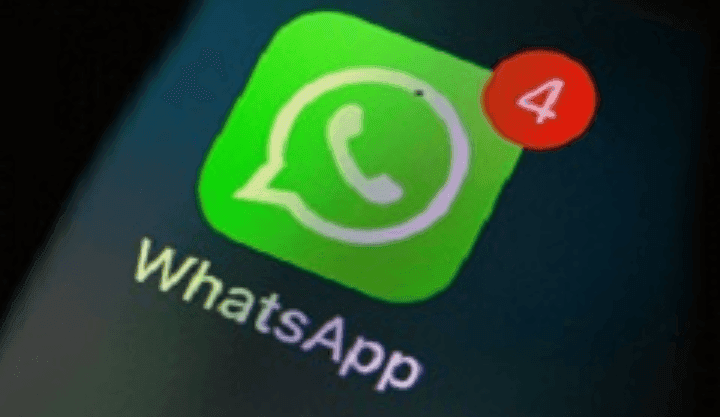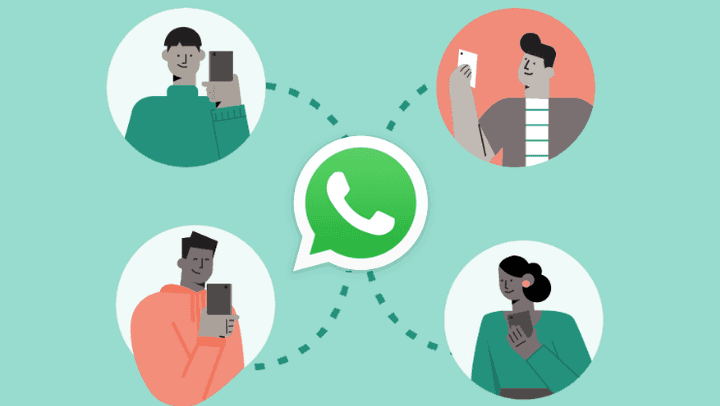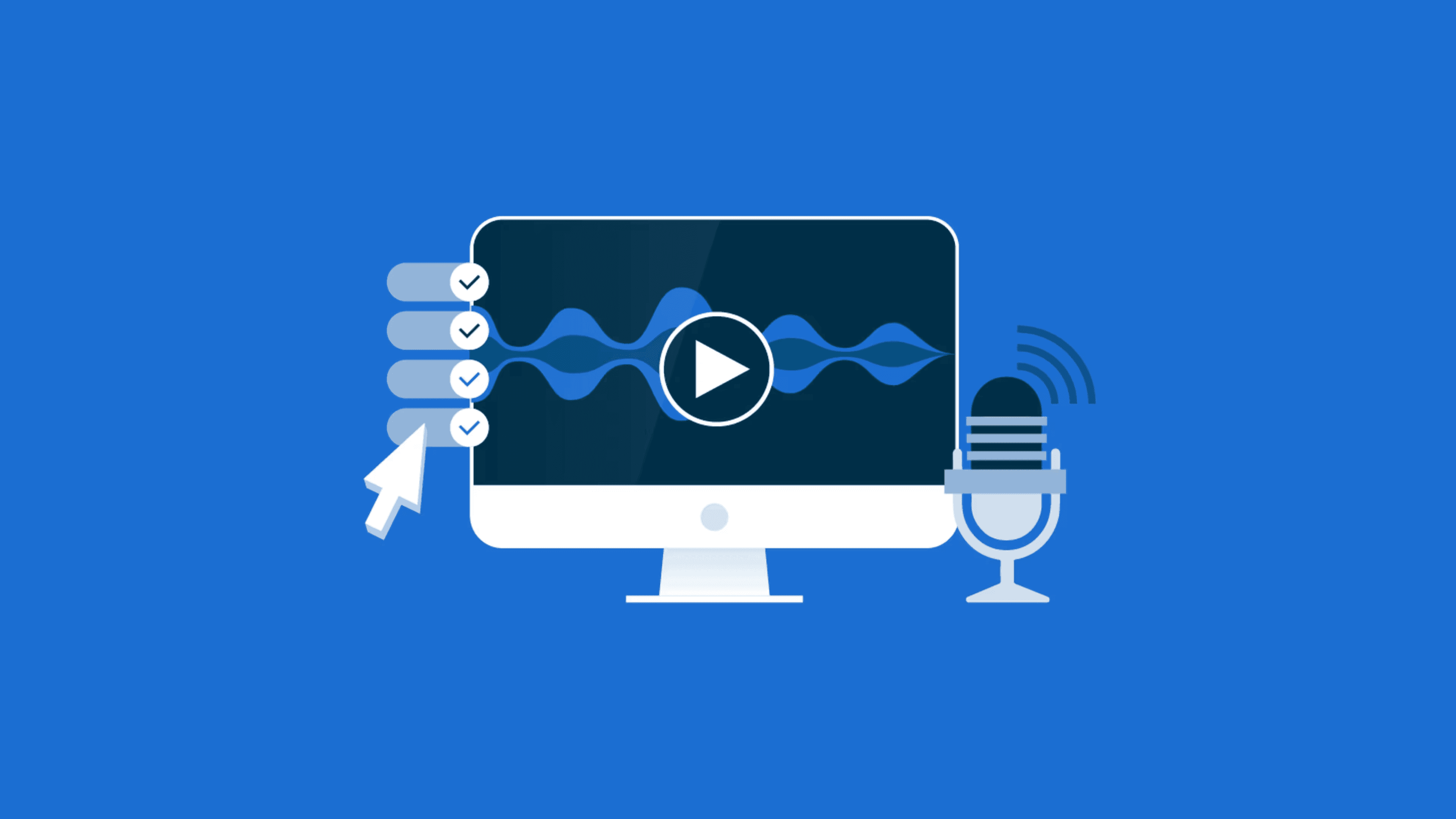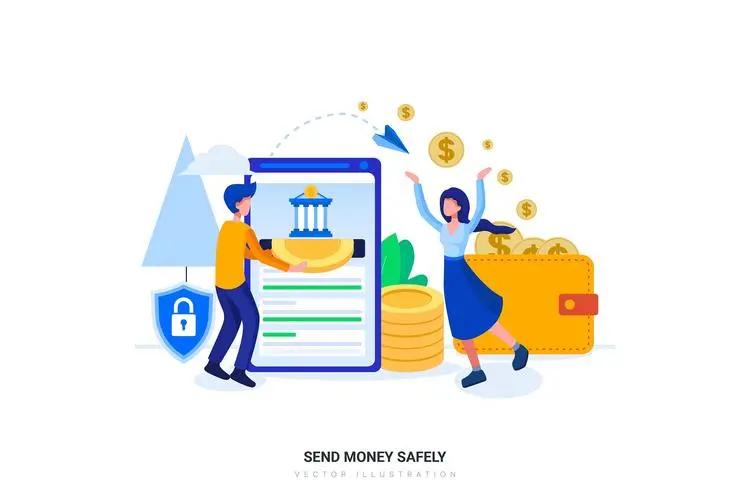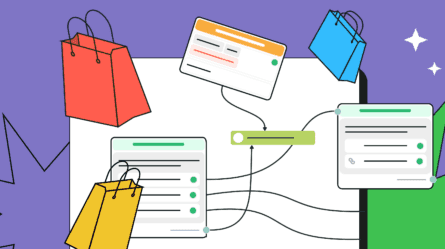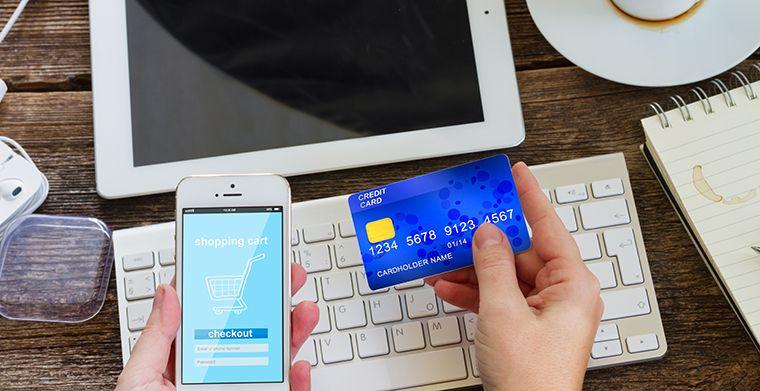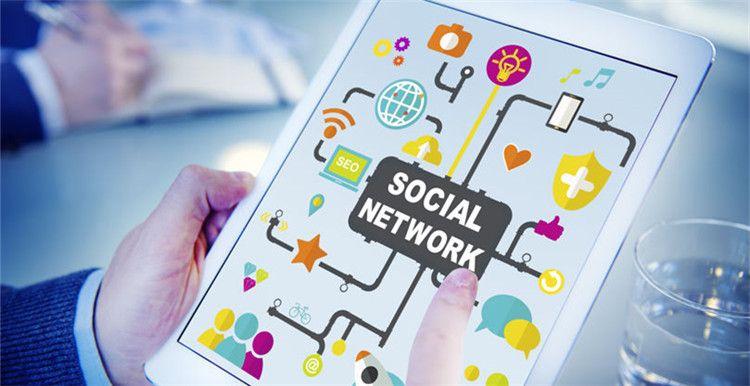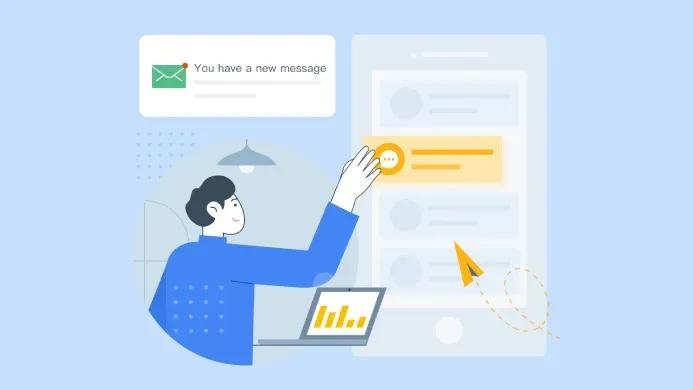筛选

Upselling
Upselling is a sales technique that allows brands to increase their revenue by inspiring customers to buy more upgraded and expensive models from their product lines.
Why Is Upselling Important?
The idea of upselling is to suggest a product that sweetens the primary deal, making the entire offer more expensive, but also adding value. Some of the obvious benefits of this practice are:
It is simpler to retain current clients than to attract new ones;
Upselling helps establish deeper relationships with your clients;
Upselling results in better customer lifetime value (CLV).
Upselling is also important because it makes it possible to sell more than one item or a single more valuable item. This technique can increase income significantly as the difference between the former product and its upgraded version may be huge.
What Is the Difference Between Upselling and Cross-Selling?
Cross-selling is offering a related good or service to the buyer (for instance, shoes in addition to a dress). Upselling, in its turn, is about offering an upgraded version of the product. What do they have in common? Both methods are used to optimize profitability by motivating clients to spend more money.
You might need some examples to realize how these practices work. Below you can see some examples of upselling and cross-selling.
Bundling Sales
One example of cross-selling is so-called bundling sales. One of the most known companies to use this approach is the famous Amazon. Businesses that sell goods online use this method and benefit from it. The bundled products should be relevant and related, like this example with “Harry Potter” below. If the products aren’t coherently related, it won’t work and will only annoy potential buyers. You may also call it “Frequently bought together.”
Mixing SEO and SEM Services
It is a good idea to mix search engine optimization and search engine marketing services. To do so, determine and create customer personas. Then, do keyword research. After that, separate and arrange the keywords; assign more complicated keywords to SEM while the rest will go with SEO. If you have to hit both long and short-term goals, this option is right for you. Another example could be offering extra services or products related to the main topic of your website. If you offer editing services for writers and students, you may list all the possible assignments that you deal with, as many similar services do (e.g., CustomWritings).
Similar and RelatedProducts
You may also choose a strategy like Laconicum does. It includes several similar or related goods in their initial offer. No matter which good you choose, you’ll be offered a better option with everything you need at the same time.
Paid Subscriptions vs Free Trials
Sky Broadband and Fibre prefer upselling to cross-selling, and they do it perfectly. They always offer a free trial or package, but the thing is that it lacks most of the features that clients need. That is why they initially try to offer paid subscriptions starting from ten pounds, for instance. They specify that the paid option adds plenty of speed, and that is exactly what customers need because everybody hates to wait.
The idea is to show that paid offers are much better than the available free options. An attention-grabbing picture is required but does not always matter if the offer has many exclusive features.
Now, it is time to dig a bit deeper into the process of creating an opportunity to upsell. Read on to find out how you can motivate your customers to buy more than they planned.
How Can I Upsell?
Define the needs of your customers
Come up with buyer personas
Combine relevant goods
Redesign the checkout page
Select the type of upsell
Benefit from knowing buyer persona
Design and set up the campaign
Upselling takes place at the point-of-sale. Both salespeople and customer success managers are responsible for creating an upselling proposition. Here is how to do it.
Define the needs of your customers
You should understand why people are interested in specific goods or services. What motivates them to make a purchase? You can either talk to your clients on the phone or try to find their customer needs via polls and questionnaires.
You might think that your service or product has everything your customers need, but you have a limited perspective. Regular conversations with your customers will detect what demands remain unmet, and you’ll be surprised. You have to put yourself in the shoes of your clients sometimes to realize what they care about most. Otherwise, your business will not please your customers or bring in the desired revenue.
Come up with buyer personas
A buyer persona is a portrait of your ideal customer. Define the exact age, gender, occupation, hobbies, needs, goals, and other critical factors to realize what they expect from you and target the correct segment.
There are many factors to consider but focus on the main things: industry, pain points, and challenges. These are the major things to keep in mind because they will bring you the most value.
The next step is very close to the previous one. To create a buyer persona, you should communicate with both returning and potential clients. Do not think that loyal clients won’t ever leave you – you should implement the best practices of retention management to keep your existing customers satisfied.
Combine relevant goods
Bundling is a type of upselling that does not simply recommend products, but groups them in a specific category. It helps customers get an all-in-one purchase: everything they might need in one package.
Redesign the checkout page
If you don’t have the relevant goods displayed on your checkout page yet, we highly recommend adding them ASAP. You may set up different checkout pages to find which approach works best.
Select the type of upsell to use
The first approach is offering an upgraded version of what a customer is already interested in purchasing. Propose another version of the good or service. Additionally, you can offer product protection – asking the customers to extend their warranty to get cheaper product support and repairs. A screen replacement warranty is one of the common because it is something that suffers most damage out of all of a phone’s components.
One more type of upselling is customization is all about adding special touches to your product. It is about personalizing the product or service so that the customer feels special and is the exclusive owner of a specific design. As for the extended service period, it is somehow similar to product protection: the idea is to suggest a better value for a prolonged contract. SaaS companies benefit from such an approach.
Don’t be pushy withyour offer
It is critical to come up with the right time for your offer. Inc.com has collected data from different sources, showing that Thursday is the best day for closing sales and setting up upsells.
Do not scare off your clients with annoying notifications and pop-ups! It is smarter to display your upsell at the payment stage, at the checkout or after that. Then, you’ll be sure that people who see your offer really need your product or service, and won’t be scared away. In the example below, the company reminds you that it is possible to get 25% off if you keep on shopping on their site. It is a rather attractive deal!
Benefit from Using Buyer Personas
So, you have determined your buyer personas, now, it is time to use this knowledge. When you are aware of a customer’s purchase history, you can provide valuable recommendations based on their previous purchases. Also, address your clients by name to make every client feel special.
When messaging, select suitable terms and phrases. For instance, it is better to avoid tech-savvy terminology if you are selling software so that you are more accessible for beginners. You should not use informal language or slang if you offer something related to serious issues like cancer treatment or home violence. Make sure that you speak the same language as your customers.
Design and set up the campaign
The last stage is to use free or paid tools to create and launch your upselling campaign. Many services make it possible to customize the fields and overall design completely.
Examples of Upselling
Now, it is time to have a look at some examples. It is up to you to choose the right form for your upselling campaign. It may be a website or an email campaign. Email upselling means sending messages after a purchase motivating buyers to take more action and continue their purchases.
Dollar Shave Club
Dollar Shave Club seems to understand its target audience perfectly. They place some restock features on their product pages and stress that clients can always count on some extras and full packages for shaving instead of, for example, blade only. Their upsellers are perfect reminders. It’s not another annoying sales pitch – it’s something that clients need and are already accustomed to using.
BMW
BMW does several things excellently. In addition to a successful UX design, they generate an opportunity for upselling. When ordering a car, they made it possible to configure the characteristics, making the car fully customizable and adding lots of upgrade opportunities.
US Pizza
The menu provides the opportunity to select cheese or olives as an extra component for a salad or pizza. US Pizza offers more ingredients or fully customizable order.
Now you understand how a good upsell looks. The practices in the section below will help you create your own perfect upsell campaign.
Upselling Tips and Best Practices
Build trust
Remain relevant
Entice returning clients
Don’t underestimate customer support
Recall the “rule of three”
Manipulate with time and delivery
Come up with the social proof
Are you looking for more tips to make your upselling offer more effective? We are ready to share some with you!
Build trust
If a customer hasn’t been with your brand for very long, they may refuse to listen to your recommendations. Build credibility by referring to specific, trustworthy, up-to-date sources related to your product or service. You may also involve influencers and ask them to share an opinion because 63% of customers rely on influencers to inform their decisions. In the example below, you can see that restaurant experts have chosen these particular places to visit. Most restaurant-goers are likely to trust a professional opinion and are more likely to visit your restaurant.
Remain relevant
Avoid suggesting items that your clients likely don’t need. Coming back to the “Harry Potter” example, do not add “Lord of the Rings” to the recommendations list. You have no evidence that your readers want to see anything other than HP-related items on their list of recommendations. These books might have similar genres, but they target different audiences.
It is not necessary to only offer books from the series of the same name. You can add other products related to the series like memorabilia to the list because it is related to the main item.
Entice returning clients
The best way to attract return customers is to give them exclusive offers. When they think that you have nothing left to surprise them with, surprise them with a compelling offer! Exclusive offers include early-bird or seasonal discounts, referral programs, vouchers, and coupons for friends, etc. In the example below, River Island stresses that there is a limited discount on a certain group of products to make you eager to make a purchase.
Don’t underestimate customer support
Client support representatives capture the most upselling opportunities. They should be able to consult a client on any upgrades or special offers at any time – make sure that they are ready.
Recall the “rule of three”
You should not forget this rule whenever you are doing any kind of marketing. Three is a magic number when it comes to sales. Perhaps, you have noticed that, in most cases, there are three subscription packages to choose from on many websites. The first one is usually free, while others show their price and explain their benefits. Besides, people love having choices, but more than three options can quickly become overwhelming. Thus, it is better to settle on the three alternatives.
Manipulate time and delivery
If you sell goods, stress that your customers can get free shipping if they hurry up to make an order now or complete any other requirements. Stress that your offer is urgent and leave little to no time for postponing their order. This tactic is used effectively in the example below.
Use social proof
Mix your upselling offers with testimonials like in the example below. You can see what other customers think about the company. This makes your customers more confident when purchasing from your company. Social proofs are effective when it comes to upselling and email marketing in general.
Once they place an order and get what they want, do not think that your work is done. Remember customer retention? After a purchase, keep sending personalized emails notifying about new offers and deals from your company. Let them come back for more like the example below illustrates.
In summary, upselling is a vital part of a successful sales strategy. It is one of the best ways to increase revenue in the short-term. If you use email marketing in your strategy, send upselling emails with LIKE.TG! Automation 360 allows marketers to set up automated email sending after the purchase event is triggered by your clients.
Follow this guide to increase revenue with the upselling techniques!
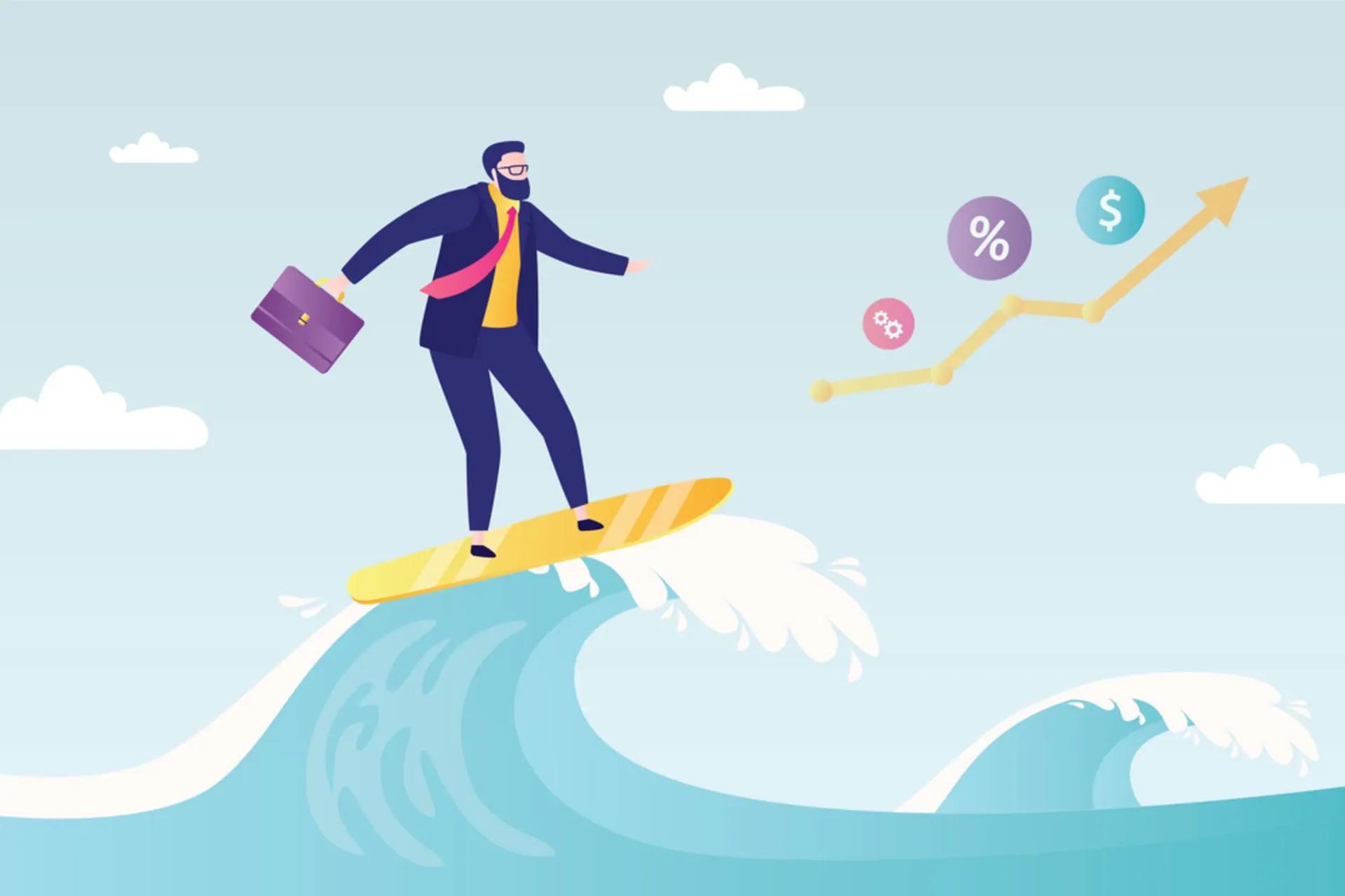
Unsubscribe page
An unsubscribe page is a web page that appears when a userclicks on the unsubscribe linkin the email footer. It aims to confirm the opt-out,and it is the last chance to keep asubscriberfrom leaving your mailing list.
Check out this video on how to create an unsubscribe page with LIKE.TG.
Why is an unsubscribe page important?
Unsubscribing is a serious issue, as it influences the way email service providers like Gmail, Yahoo, and Outlook judge your sender reputation. Acertain number of unsubscribes — over 0.05%from emails delivered —may harm the deliverability of your emails.
Most often, people opt-out because of a high email sending volume, irrelevancy of content, or because they feel overwhelmed with the overall number of emails in the inbox. Sometimes userseven can’t recollect they have once subscribed. Keeping the unsubscribe rate within a norm is a challenge, and the unsubscribe page is the last chance to re-engage users or, at least, find out why they want to get no more emails from you.
An unsubscribe page is also a way to confirm the user’s intention to leave your mailing list. With AMPemails, unsubscribing directly in the email became possible,but not many brands use this technology so far.
How to create a custom unsubscribe page?
It takes just a few minutes to create an unsubscribe page with LIKE.TG. The service provides a default unsubscribe page for confirming the opt-out.
You can create a custom one, change the background color, create a survey with the questions that will help you find out the reasons whyusersunsubscribe. If a person has once opted-in to receive different flows of emails like weekly newsletters and blog digests, suggest unsubscribing from one flow of emails, staying on another.
Here’s an instruction on how to create an unsubscribe page in few steps. Check the example below.
Unsubscribe Page Tips
Suggest updating email preferences
Encourage unsubscribes to follow you on socials
Make a survey optional
Don’t require signing in to unsubscribe
Leave a positive trace
Suggest updating email preferences. Since the most common reason for breaking up with a brand is the wrong email sending frequency, ask your audience to change their email preferences. Even one email a monthcanturn out into some revenue in the future.
Encourage unsubscribes to follow you on socials. Some of your subscribers may want to clear out some private space because they feel overwhelmed with the number of emails in their inbox. Offer to continue communication on Facebook, Instagram, or Twitter. Does it matter where exactlyis your engaged audience, even if it’s not in the email inbox?
Make a survey optional. Don’t make an obligatory poll about what was wrong and how you could improve your job. Such an approach may result in moving your email to a spam folder, too. It’s OK to ask subscribers why they unsubscribe, but let them decide whether they want to answer any questions.
Don’t require signing in to unsubscribe. When the user wants to unsubscribe, that’s for a reason. Allow them to do so in the easiest way possible. Signing in to unsubscribe pushes them to mark your email as spam, which harms your sender reputation even worse than unsubscribing. After all, when uninterested users leave, it makes your mailing list healthier.
Leave a positive trace. Yes, it is not easy to say goodbye after all you’ve been through together, but if there are no other options, make it memorable in the right way! Say that you'll wait for them to become subscribers again. A great example is HubSpot’s unsubscribe video. Some comment on YouTube says: “I want to sign up so that I can unsubscribe!” This is a kind of reaction you should try to achieve.
Unsubscribe Page Examples
Architectural Digest. On this unsubscribe page, AD suggests changing the email sending frequency. This is an excellent strategical move since thisbrand kind of bombards its subscribers with daily emails from the very start.
Death to Stock. There is a small optional survey on this unsubscribe page, that would help improve the brand’s email marketing. The only thing that'snot quite righthere is Death to Stock unsubscribe a user right away after they click on the unsubscribe link. In case the users will change their mind, it would be too late: they would have to go back to the website and subscribe once again, which they would probably not do.
Chubbies. As always, any sort of communication with these guys is humorous and friendly. They use every single chance to keep users from unsubscribing: suggest changing preferences, hilariously plead for sympathy, and offer to continue communication on socials.
Check this helpful blog article for more examples of unsubscribe pages.

User agent
The term user agent stands for agent software, which is acting on behalf of a user. In its most common meaning, it is a client application that uses a particular network protocol.
When a user agent operates inside a network protocol, like HTTP, SIP, and NNTP, it identifies itself (including the operating system and software vendor) by submitting an identification string to the operating peer.
This video produced by OSINT Curious considers the user agent string and explains why you should care about it.
User Agents in Email Marketing
When it comes to email marketing,a user agent serves as an essential source of information about operating systems, browsers, and devices, which subscribersuse to open emails. LIKE.TG provides these statisticsfor all email campaigns.
Knowing these statistics enables you to analyze an email campaign in terms of graphic design and adapting HTML emailsto different kinds of mobile devices.

Usability
Usability is a term that entails the accessibility, clarity, credibility, simplicity, and relevancy of a website for users. Good usability ensures a seamless experience, improves conversionsand rankings, and establishes customer loyalty.
In this article, we’ll uncover the importance of usability’s key principles and review some great examples. We’ll also discuss website usability testing and offer several tips to improve your website’s usability.
Why is website usability important?
Webmasters and developers do their best to create user-friendly, easy-to-navigate, and modern sites. Since a website is one of the main mediums for communication with customers for many software companies, it should be almost perfect and comply with clients’ requirements. Businesses build their online presence to reach prospectsand customers and attain their goals. The image of a company is often shaped by its website’s accessibility, relevance, convenience, simplicity, and credibility.
By creating sites with good usability, you enable users to convert faster. If you want users to buy from your company, subscribe to your email newsletter, or contact your support, provide them with a seamless website experience. To obtain higher conversion rates, businesses avoid complicated formsand long checkout processes and ensure that links work properly and their website load time is fast.
Satisfied clients stay loyal to a brand and don’tswitch to competitors. If users feel comfortable using your website, they will stay with your company. Website usability significantly affects SEO, and itentails not only customer satisfaction but the ability of users to easily explore and findwhat they are looking for on a site. Google tracks websites that are useful andanalyzes them while shaping the ranking. Besides, some websites experience high bounce rates because of low usability.
Now that you know why website usability is important, let’s talk aboutits main elements.
Key Principles of Site Usability
If you strive to see your company prosper, you need to have excellent website usability. We’ll review several aspects you need to consider when developing a user-friendly website.
Accessibility. Availability and accessibility are vital since they let leadsand customers explore your product. Ensure that your websitedoes not have any loading errors to avoid dissatisfaction among users. For this, find good hosting. Check your website for broken links, and remove them if you have some. Since the number of mobile internet users now amounts to 4.28 billion, there’s a point in applying responsive website design. It will help make your site navigation more accessible, especially on devices with small screens.
Clarity. Users who come to your website with a specific goal and can’t find the necessary information may never revisit it. That’s why you should help them achieve their goal. If you aim to let customers reach their objectives, provide them with a consistent experience, guide them across your website, focus on the most important information, implement the strategies people are already familiar with, and structure your content.
Simplicity. Design a user-friendly interface that people can handle without instructions to simplify your website usage. Leverage easy-to-manage design concepts people already know. Make use of these popular approaches consistently to meet customers’ needs as soon as possible.
Familiarity. Even if you have quality content, people won’t trust a company without a good reputation. It’s pivotal to provide users with information about your business to establish credibility and brand awareness. Create an outstanding “About Us” page where you can tell about your company’s mission, vision, and goals. Make sure to include your contact information and address. You should create informative and quality content people can trust. Double-check your articles and other content for spelling and grammar.
Relevancy. One more principle of good usability is relevancy. The content your company presents should solve users’ problems. That’s why you should make sure you know yourbuyer personas, their wants, needs, interests, and issues to address them and provide solutions. Once you know their goals, develop scenarios where customers will come to your website for help. Make use of them when creating new content.
It’s time to jump into website usability testing.
Website Usability Testing
Website usability testing is implemented to gauge a website by obtaining feedback from users after they visit a particular site. Companies that leverageit create a list of tasks and scenarios a person needs to perform when visiting a specific site. There’s also a person who monitors the actions and performance of a website in different situations. As a result, business owners can instantly see the strengths and weaknesses of their websites andidentify the areas that require improvement.
Usability testing can be divided into three key methods:
explorative (it’s used at the early product development stage to evaluate the effectiveness and usability of a preliminary design or prototype);
assessment (it’s used to assess your technology and includes real-time trials tomonitor satisfaction, effectiveness, and usability);
comparative (it involves comparing two different solutions, defining their weaknesses and strengths, and asking users which one they prefer).
Now that you are acquainted with the methods, we need to proceed to the next section to explore several ideas that will help you improve usability.
7Tips to Improve Website Usability
Increase website speed
Be consistent with your website design
Come up with a mobile version
Leverage a simple navigation layout
Arrange your content based on generally accepted rules
Ensure that your main features and benefits are visible
Use images wisely
To make your business successful, you need to develop a simple, convenient, and useful website. Explore our seven tips to improve usability and attract more customers.
Increase website speed. Statistics show that a slow loading time leaves users unhappy and discourages them from coming back.Moreover, the majority of customers expect a website to load within two seconds. According to WebsiteBuilderExpert, 46% of internet users don’t revisit websites with poor performance. Hence, if you don’t want to lose prospects and customers, ensure that your website speed is high enough. Remember, unoptimized images, bad hosting, problems with JavaScript, and lots of flash content slow down the speed of your site.
Be consistent with your website design. Once you finish with the website speed, check if you are consistent in your layout, font, and color scheme to make a user feel more comfortable and recognize your brand. Make sure to have the same layout across all pages, similar colors, and fonts not to confuse customers.
Come up with a mobile version. Now when the number of smartphone users worldwide has reached 3.8 billion, a responsive website is a must-have for every business. Since the majority of people browse the internet from smartphones and tablets, you need to ensure a seamless website experience: good speed, clear navigation, and easy-to-find CTAs. Apart from that, don’tforget to use the same font and colors you have in your desktop version.
Leverage a simple navigation layout.Find a good, clear, and familiar navigation layout if you don’t want users to abandon your website without even exploring it. Keep in mind that many customers have already gotten used to certain layouts, so you better use something simple, standard, and familiar to everyone. Your main goal here is to make visitors feel comfortable. Consider leveraging a simple navigation bar at the top of the website that contains links to your main pages.
Arrange your content based on generally accepted rules. It’s critical to have quality content in terms of customer satisfaction and SEO. Therefore, create your content based on standard rules and SEO guidelines. Use clear and short headings and subheadings to break your content into logical parts and make it look better for users, and let them perceive information easily.
Ensure that your main features and benefits are visible. To let customers instantly gather information about your company, product, features, and benefits, create a section with this data, and make it visible. You can implement icons for your features to attract customers’ attention.
Use images wisely. Of course, visuals play a significant role in demonstrating your product and the benefits it provides, but you should not overdo it. Bear in mind that although images will help you break up the text, they influence your website speed. You need to moderate your website to hold the attention and interest of readers.
You already know some great tips to improve website usability, so it’s time to see several examples.
Examples of Good Website Usability
Increasingyour website loading speed to improve usability is not enough. This process needs improvements in layout, navigation, design, content, visuals, and more. Now we’ll unveil how different companies managed to achieve it.
Master Class
Let’s take Master Class, for example. The company that offers classes in different disciplines enables users to easily access and load its website fast. It’s consistent in its font, color scheme, and layout usage across all web pages. Master Class also has a visible and clear CTA button and all important information for newcomers.
Mobile users can also explore the company’s services from their smartphones or tablets.
Apple
You can’t ignore the simplicity of Apple’s website and the way it focuses on the key benefits and features of its products. It contains a lot of white space and makes a site look very stylish and minimalistic. The classical navigation menu allows customers to feel comfortable when they decide to explore the company’s products.
Pantene
The company’s website has a standard navigation menu, consistent content, similar font, color scheme, and layout across all website pages to make people recognize the brand and easily navigate its website. Pantene also provides a convenient mobile version.
Congrats, now you know the importance and key elements of usability. Grab some inspiration from our tips and examples to develop a user-friendly and relevant site.

Unsubscribe rate
An unsubscribe rate is a measure that indicates the percentage of users who have opted-out from the mailing list after an email campaign. The unsubscribe rate impacts email deliverability, soalarge number of unsubscribers leads to negative consequences from email service providers like Gmail, Yahoo, and Outlook.
Watch this video, where the expert from Sleeknote gives a framework for reducing the unsubscribe rate and keeping subscribers engaged.
The Role of the Unsubscribe Rate
Marketers monitor the unsubscribe rate to measure email marketing strategy success along with other metrics like open rate and click-through rate. With LIKE.TG, you can track the number of unsubscribes after every email campaignsent.
Unsubscribes are a sort of a self-cleaning of your mailing list, meaning that unengaged people simply stop communication. However, the more users unsubscribe, the more it damages your sender reputation.
Ahigh unsubscribe rate indicates that some elements of your strategy have gaps and you need to take a closer look at your email campaigns. Perhaps the email sending volume is too high, the content is irrelevant to users’ expectations, or your email templates look unprofessional and outdated.
Before you start recollecting all of the weak points of your emails, learn how to get that unsubscribe rate first.
How to Calculate the Unsubscribe Rate
Todetermine the unsubscribe rate, you need to know two metrics: the number of delivered emails and the number of unsubscribes. You can find these metrics in the statistics of each email campaign you create with LIKE.TG.
Here’s the formula:
Unsubscribe rate = (Unsubscribers / Successful email deliveries) x 100
For instance, imagine you’ve sent a campaign with 5000 of emails delivered and 10 users unsubscribed. Divide 10 users by 5000 delivered emails, and you’ll get 0.002. Multiply it by 100 and get the unsubscribe rate — 0,2%
What is a good unsubscribe rate?
According to SmartInsights, you can consideran unsubscribe rate below 0.5% as normal, while 0.2% and below is excellent. Note that the unsubscribe rate for newly generated mailing lists is naturally higher since people need some time to decide whether they want to continue building relationships with your company.It is important tomonitor the unsubscribe rate when the mailing list is settled down — unengaged subscribers have opted out while the rest of them got used to the way you communicate with them.
However, if you’ve noticed a sudden leap in the unsubscribe rate, it is a signal that something in your email marketing needs to be reconsidered.
How to reduce the unsubscribe rate
Segment subscribers
Double opt-in users
Implement personalization
Let users decide upon email sending frequency
Make mobile-friendly emails
Ask for feedback
Reactivate subscribers
Segment subscribers. Segmentation is a method of dividing subscribers into different groups with something in common like age, gender, country, etc., intending to make more relevant content.
Double opt-in users. The CAN-SPAM Act requires companies to opt-in users. Double opt-in ensures that you deal with an engaged audience, having active email addresses on your mailing list. In the first stage, users enter their information in the subscription form on your website or blog and get a confirmation email. In that email, they confirm the subscription by following the link.
Implement personalization. Use information about user’s interactions with your website and emails, subscribers’ place in the sales funnel, data on previous purchases, etc., to send individual emails to provide a positive experience. You can send automated emails to support users during onboarding and purchasing processes with Automation 360.
Let users decide upon email sending frequency. Getting too many emails from one brand is very annoying for the users. Give them a choice on the number of emails at the beginning of your relationships — in a subscription confirmation email. Here are some email sending frequency best practices.
Make mobile-friendly emails. More than half of all emails are read from mobile devices. Make sure to display emails correctly on all devices. All emails in LIKE.TG are responsive by default.
Ask for feedback. It’s okay to ask people what they think about your emails. Send an email campaign with a survey or ask to leave feedback on Google Forms. The information users share with you will open the way for improvements. Don’t be afraid to ask for feedback right during the unsubscribing process: if you fail to keep the subscriber on your list, at least you will know the reason why they unsubscribed.
Reactivate subscribers. If the user hasn’t been active for three months, send a reactivation email with an eye-catching subject line like “We miss you!” or “We need to talk...”. In the email, remind recipients about the value you provide and ask if the user wants to continue communication.
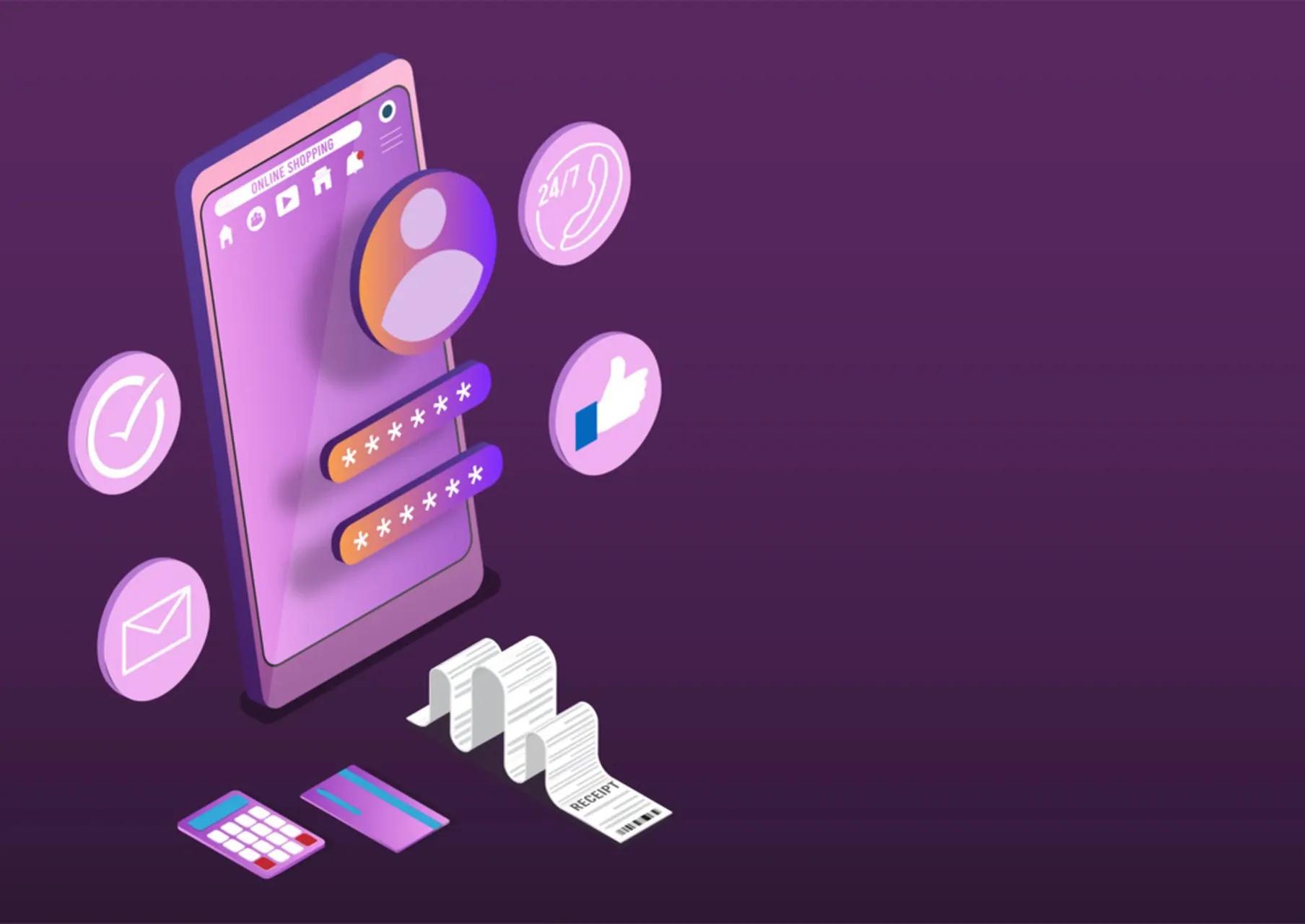
Unsubscribing
Unsubscribing from mailings is the ability for a recipientto no longer receive emails from a specific company or individual.
Methods of Unsubscribing
Unsubscribing from the current mailing list;
Unsubscribing from all of the sender’s mailing lists.
The recipient can choose between these two ways of unsubscribing by selecting or leaving unselected the option “Unsubscribe from all mailing lists.”
Mailing list services allow you to choose different levels of unsubscribing. This might be unsubscribing from a particular list, from a specific author, or all authors on the service in general.

Unsubscribe request
An unsubscribe request is a request sent from a subscriber that no longer wants to receive marketing emails from a particular company. Email marketers must provide an immediate unsubscription option in every email to abide by the CAN-SPAM Act.
It’s absolutely normal for some part of your audience to unsubscribe from your messages because you can’t provide content that fits everyone on your mailing list. A reasonable unsubscribe rate is around 0.05%. This means that five out of a thousand people click on an unsubscribe link after receiving every email campaign you send.
If there’s no unsubscribe link in your emails, you leave subscribers no choice but to mark your emails as spam. Spam complaints signal to email providers like Gmail, Outlook, and Yahoo that you abuse people’s rights and are doing fraudulent email marketing. The worst-case scenario for failing to include an unsubscribe link in your emails is being blacklisted.
Even a few spam complaints can be enough to harm your sender reputation and influence your email deliverability, putting all your email marketing operations at risk. All that being said, make sure that you include an unsubscribe link in your emails to make sure that you don't put your marketing efforts in jeopardy.
Are people who request to unsubscribe automatically removed?
Yes, bulk email services that handle email marketing for companies automatically remove people that want to unsubscribe to ensure they abide by the anti-spam laws. LIKE.TG, for example, adds an unsubscribe link to every email, by default. Aside from that, we provide constructive anti-spam recommendations, including issues with unsubscribe links before you launch an email campaign.
If you don’t use a professional bulk email service for your digital marketing, you might simply forget to include this link in your campaigns or forget to manually remove unsubscribers from your mailing list. That’s why LIKE.TG automatically adds unsubscribed users to a suppression list, preventing any accidental unsolicited communication with them.
How to Handle Unsubscribe Requests
Provide an unsubscribe link
Make the unsubscribe link visible
Immediately remove users who requested to unsubscribe
Don’t ask users if they are sure
Redirect to an unsubscribe page
First of all, you need to satisfy all unsubscribe requests because it’s not a matter of choice but a matter of healthy communication and following opt-out rules. Follow these five best practices when working with unsubscribe requests to be on the safe side.
Provide an unsubscribe link. Make sure it works. If an unsubscribe link is broken, users won’t be able to use it and are likely to mark your email as spam. It’s much faster to report your emails as spam than it is to contact your brand regarding this issue.
Make the unsubscribe link visible. It should be easy to find it in the footer of your email. Some unethical companies add an unsubscribe link that is extremely small, is hidden in the legal address in the footer, or doesn’t look like a link. These tricks won’t work well for your brand because unsubscribers will mark your email as spam without hesitation.
Immediately remove users who requested to unsubscribe. Automate this process to eliminate the risk of sending any emails to unsubscribed email addresses. If a user receives an email after they’ve unsubscribed, it will harm your sender reputation and overall brand reputation. That’s because some users may post on Facebook or other socials to tell people that you violated their rights.
Don’t ask users if they are sure. No one clicks an unsubscribe link if they are not sure. Don’t make the unsubscribers confirm their decision with any checkboxes, or “Yes” and “No” buttons.
Redirect to an unsubscribe page. This page informs the user that they are no longer on your mailing list. However, nothing stops you from using this page to provide a resubscription option or ask people why they chose to leave your mailing list. Use this approach very carefully, offer a survey or resubscription button once when users realize they’ve successfully unsubscribed.
Let’s learn how to create a meaningful unsubscribe page.
How to Create an Unsubscribe Page
Customize the Unsubscribe page look
Add an optional survey
Preview the unsubscribe page
It only takes a few minutes to create an unsubscribe page with LIKE.TG. The service provides a default unsubscribe page to confirm the opt-out. You can customize it by following the steps below.
Step 1: Customize the unsubscribe page look
Go to your LIKE.TG account settings and choose the “Unsubscribe pages” tab. Then click on “Add a new unsubscribe page.” Create a name and title for your unsubscribe page. You can change the title and page’s background color, add a favicon, add an unsubscribe page survey, and choose your customized unsubscribe page as your default one.
Step 2: Add an optional survey
Customize the survey by altering the default questions to meet your needs. This will clarify why the user unsubscribed.
Step 3: Preview the unsubscribe page
Keep customizing it until you’re satisfied and then click the “Create” button. Take a look at an unsubscription page that lets users review their subscription preferences.
Here’s a detailed guide on how to create an unsubscribe page in few steps.
Handling unsubscribe requests in the right way is crucial for your email marketing since it helps you abide by the CAN-SPAM Act, build healthy relationships with your audience, and in some cases, enables you to gain insights about your business. Don’t overlook this factor when you build your email marketing strategy.

Travel marketing
Travel marketing is a combination of activities and strategies aimed at promoting and selling products related to the travel industry. It helps hotels, airlines, travel agencies, and tour operators catch potential customers’ eye, encourage them to buy a specific travel service or product, and convert them into clients.
In this article, we’ll unveil why marketing in travel and tourism is essential and review 10 travel marketing strategies, ideas, and tips. We’ll also explore some excellent examples of travel marketing campaigns.
Why is marketing important in travel and tourism?
Marketing is crucial to the success of any business, and the travel industry isn’t an exception. It helps tourism companies in various ways, and in this section, we’ll uncover the most important advantages.
Stand out in a highly competitive market. The travel sector is filled with numerous hotels, airlines, destinations, and tour operators, so competition is increasingly high. To stand out from the competition, business owners use marketing to communicate their unique value proposition and connect with customers.
Establish customer awareness. In our digital world, clients search for new destinations, travel products, and services related to tourism online. Companies striving to introduce their products and services to a wider audience and establish brand awareness use advertisements and online content. Once travelers visit specific sites, they can instantly see their options.
Build a positive brand image. Strong branding, recognition, and trust are a must in the travel industry. Companies with a positive brand image attract more customers and generate more revenue. By utilizing marketing strategies, business owners succeed in creating awareness about the numerous options available, encouraging potential travelers to consider specific products and services for their future adventures.
Generate higher revenue. Effective marketing strategies can increase the number of tour bookings, hotel reservations, and ticket sales, bringing higher revenues. In turn, this contributes to a business's success and financial health.
Improve customer engagement. Social media, email marketing, chatbots, content marketing, and other channels help communicate with customers regularly. Travel companies engage with prospects and clients and update them on new trips, destinations, tickets, and promos, turning the audience into loyal customers who return and repeat their bookings, reservations, and purchases.
Educate clients on specific travel products and services. Travel agencies, airlines, and hotels use marketing for educational purposes. Various marketing channels like Instagram, Facebook, TikTok, chatbots, and email campaigns can become sources of valuable information about new destinations, travel tips, and the best locations for different types of travel.
Adapt to new trends quickly. Like any other, the travel industry changes very quickly due to changes in customer preferences and technological improvements. Marketing enables companies to stay afloat, align with customer needs, and adjust their strategies to stay relevant.
Now that you are aware of the main reasons to consider travel marketing for your tourism business, it’s time to review 10 effective strategies that will help you start implementing it.
10 Travel Marketing Strategies
In this section, we’ll provide 10 strategies you can consider for your tourism business. They’ll help you figure out where to start and how to make your travel marketing efforts work.
Email marketing. Despite numerous marketing strategies and technology innovations, email marketing is still among the most effective approaches. With the help of email campaigns, you can update customers on the new destinations in your tour agency, inform them about the reduction in ticket prices, provide enticing travel offers, or send personalized recommendations based on users’ searches. It is fast and effective, especially when using a bulk email service like LIKE.TG. The platform lets you send up to 15,000 professional emails for free, using a no-code editor and ready-to-go templates.
Content marketing. This strategy is a must for every company involved in the tourism industry. You can significantly improve clients' engagement and desire to buy your travel products or services by writing valuable articles, sharing travel tips, and posting stories about new destinations. To make content marketing work, you need to create high-quality, informative, and engaging content for blog posts, videos, and social media. It will help you demonstrate the unique aspects of your products and services.
Social media marketing. Utilizing social media like Instagram, TikTok, and Pinterest allows you to establish awareness, generate engagement, and gain recognition. Social media networks can bring a lot of benefits to business owners when they use these channels correctly. Consider sharing visually appealing content through these platforms: creating informative reels with tips, best destinations, and attractive prices. If you do everything right, social media will promote your content for free, making your company well-known among users.
User-generated content. Establishing transparency and credibility can be challenging for companies, yet you’ll achieve it faster with user-generated content. As you know, people trust other customers’ recommendations, so it’s essential to let your clients share their travel experiences and make them visible to your target audience. Collect positive customer reviews and showcase them on various platforms, including Instagram, Facebook, and TikTok, to establish a positive image.
Video marketing. Video content plays an important role in establishing eye contact with clients, building emotional connections, and demonstrating your travel products and services from the best perspective. Visually appealing videos for Instagram and YouTube will help showcase your unique offering and catch customers’ attention. To generate more conversions, consider creating compelling videos covering destination highlights, travel itineraries, hotel overviews, etc.
Chatbot marketing. Adding a chatbot or AI assistant to your travel company’s site or social media is necessary for instant help and assistance. AI will help you analyze customer behavior and actions on your site and personalize communication with your audience. After utilizing a chatbot, you can quickly respond to FAQs and improve customer satisfaction with your brand. If you are searching for a perfect solution, consider leveraging LIKE.TG, where you can build a helpful chatbot for Instagram, Facebook Messenger, your site, WhatsApp, and Telegram without knowledge of the code and programming skills.
Influencer marketing. Opinion leaders greatly influence their audience, especially when recommending products and services they can benefit from. Consider collaborating with influencers related to the travel industry. Today, you can find dozens of couples and solo travelers around the world, and they can become your promoters. Think of the strategy and a powerful message promoting your travel agency, hotel, or spa services. Add videos of your business so that people can instantly see the perks of visiting your place or ordering your services.
Live streaming events. Engaging with the target audience is useful for your business when you can share useful tips, interesting destinations, and travel experiences. This information can entice customers to buy your travel products or services. You’ll get more conversions when you invite travel experts who can organize QA sessions and find the best solutions for those who plan to travel.
Virtual and Augmented Reality. It’s important to use technology when showcasing your travel products and services. Augmented reality is the best way to provide potential clients a virtual tour of destinations and demonstrate hotel rooms and amenities. It will help you show your unique selling proposition, improve engagement, and help future travelers make well-informed buying decisions.
Loyalty programs. Lastly, it's essential to establish contact with potential customers and show care towards existing clients. You can do it by implementing loyalty programs. They will help reward repeat clients and encourage them to stay with your travel agency, hotel, airline, or resort. Consider providing exclusive discounts, perks, or access to special events.
Now that you know the strategies, it’s time to explore some excellent marketing ideas and tips, so let’s dive in.
10 Travel Marketing Ideas and Tips
In this section, we’ll discover 10 travel marketing ideas and tips. Let’s get started one by one.
Send personalized travel recommendations. When the travel industry is enhanced with technology and the competition is high, ensuring a personalized approach to every lead is essential. Consider using your website as a source of information about user activity, behavior, and actions. You can provide personalized recommendations based on the flights, tours, or travel services your site visitors were searching for. To ensure a curated travel experience, you need to look through the interests, social media actions, and previous bookings.
Provide limited-time offers to establish FOMO. Use email campaigns, social media networks, or SMS campaigns to promote your exclusive discounts and offers. Utilize LIKE.TG for a convenient process of creating and sending email and SMS campaigns, messages in chatbots, and displaying web push notifications with limited-time offers. Limited-time deals will help you establish a fear of missing out and create a sense of urgency, encouraging customers to take the desired action quickly.
Collaborate with travel bloggers. A partnership with bloggers involved in the travel industry can become a source of more potential clients, higher conversions, and bigger revenue. Consider collaborating with travel influencers to provide information about your destinations, products, and services to a wide audience of people who might be interested. This approach will help you reach customers worldwide and scale faster.
Develop attractive travel packages. Create exciting travel packages at an attractive price for couples, families, or specific destinations. These packages can cover flights, hotels, and activities to entice customers. Usually, these offers grab travelers’ attention and encourage them to go on a vacation with family or friends.
Use videos to share travel experiences. Create compelling videos to show the advantages of your company by including travel experiences, new destinations, and travel tips. They will serve customers as sources of valuable information and as channels for additional conversions for your business. Visually appealing videos will help you establish connections with potential clients, interest them, and consider traveling with your company. Videos featuring real travelers will help you establish trust and credibility.
Encourage user-generated content. Consider using numerous ways to encourage your customers to share their feedback, testimonials, and reviews of your travel products and services. It can be a comment, video recording, or post on social media. Encourage them to use your branded hashtag and share their stories with your company across social media channels. You can provide rewards, gifts, and discounts for further travel with your company in exchange for reviews.
Offer loyalty programs. Consider leveraging loyalty programs for repeat purchases and better engagement. Reward your loyal clients with perks and discounts to make them stay with your travel agency, airline, or resort. Loyalty incentives can encourage your customers to refer their friends and repeat reservations.
Provide virtual tours and experiences. Consider utilizing technology for better customer experiences and engagement by using virtual tours of destinations, hotels, or attractions. These tours can serve as a source of inspiration for travelers who will come to your company when they are ready to explore new locations. Your business will help them map out their routes and embody their plans.
Utilize geo-targeted ads. Localized ads will help you reach your target audience based on their location. You can offer your services to people from different countries when they are in the area you work in. These ads enable you to find individuals who are interested in your travel agency or nearby hotel.
Host live streaming events. Use live streaming to demonstrate events, festivals, and specific travel activities in real time. You can organize live QA sessions to provide travelers with all the necessary information about your company. Your travel experts can share some useful tips and tricks for people to consider when traveling to new locations.
Now that you know the working best practices, let’s proceed to the examples.
Examples of Travel Marketing Campaigns
Travel marketing campaigns have various purposes, yet they often strive to inspire travelers, uncover new destinations, and encourage reservations. In this section, we’ll review some great examples of companies related to the travel industry that use numerous marketing channels to make their products and services visible to customers and improve sales. Let’s get started with Pegasus and its travel marketing email campaigns.
Pegasus Airlines. Email Campaigns with Discounts
The Turkish low-cost carrier actively uses email campaigns to promote its services and encourage more ticket bookings. Subscribers can find various enticing emails from the company containing attractive discounts, introducing new routes, offering hotel discounts, and providing information about available tours and activities.
Below, you can see one such email campaign providing a 50% discount for flights to Denmark, Finland, Norway, and Sweden during a specific period.
Luna Retreats. Sponsored ads on Instagram
Luna Repreats uses sponsored ads on Instagram to find its target audience and educate them about the company’s products and services. The brand strives to build a community of like-minded people who intend to join the transformative retreat training and empower them with new knowledge and skills for a healthy mental and physical lifestyle.
Bürgenstock Resort. Collaboration with Influencers
The luxury resort welcomes guests from all over the world and offers outstanding services. It uses Instagram as one of its promotional channels. The resort focuses on collaboration with opinion leaders who travel around the globe and share new destinations with followers. The Instagram post below includes a tag that will bring users to the resort’s account and a short overview of the spot and its services. The influencer’s pictures demonstrate all the beauty of the places and the perks people can experience when visiting this extremely beautiful location.
Congrats! Now you know what travel marketing is and why it is crucial for every company involved in tourism. We hope that our tips and examples will inspire you to develop an effective travel marketing strategy for your business. Register in LIKE.TG now to establish your communication with customers through the most popular marketing channels.

Trigger marketing
Trigger marketing is the use of a marketing automation platform to respond to specific actions of leads and customers. Email opens, viewed pages, chatbot interactions, and conversions serve as triggers for the software to automatically send a message (email, SMS, push notification, etc.) to a prospect or customer.
In this article, you’ll find out why trigger marketing is important and explore its benefits. You’ll also unveil the types and examples, and figure out how to create a trigger-based marketing campaign with LIKE.TG.
Why is trigger marketing important?
Trigger marketing helps brands reach customers with relevant messages at the perfect timing. Marketing automation empowers entrepreneurs to respond to users' actions with the right solutions. Email opens, chatbot interaction, and conversions are the triggering events for the software to act. A marketing platform is necessary to automate tasks such as sending email sequences, updating a CRM, adding customers to a list, etc.
With marketing automation software, your brand becomes more human-centric. By sending personalized and relevant messages, you can make your customer feel special. This leads to better communication with the audience and stronger relationships. Unlike mass advertising, trigger marketing focuses on clients’ needs and adapts materials and tasks. Seamless customer service helps you improve customer satisfaction and loyalty to your brand.
By sending trigger campaigns to prospects, you can show them that you care. This way, you’ll establish a positive first impression and encourage word-of-mouth promotion. Brand awareness will increase.
Now that you know why trigger marketing is essential, it’s time to uncover the benefits you can reap after implementing trigger marketing.
Benefits of Using Triggers
Many companies have already leveraged trigger-based marketing to attract customers’ attention to their products. Now we’ll have a closer look at the benefits of this technique for you to decide whether you need it for your company’s success.A brand that uses triggers can obtain the following advantages:
improved customer loyalty;
higher customer satisfaction;
better customer service;
brand awareness;
cost-efficiency;
relevant messages;
competitive advantage;
business process automation;
increased conversions;
access to behavior-based data.
To reap the benefits, you need to choose the right type of marketing trigger for your event. To do it, you should know each type in more detail. In the next section, we’ll review the four most popular triggers.
Types of Marketing Triggers
Many users’ actions serve as triggers for sending relevant email campaigns, push notifications, SMS, chatbots, etc. In this section, we’ll review the classification of triggers and examples for each type.
Event-based triggers
An event is a perfect occasion to send your subscribers an email. The following events can serve you as triggers: brand anniversary, Black Friday, Independence Day, Cyber Monday, Mother’s Day, customer’s birthday, etc. You can provide your clients with attractive offers, discounts, special promos, and more. Often, these offers are limited in time, so consumers have a fear of missing out and rush to buy your product.
For instance, Cyber Monday triggered MAC Cosmetics to send subscribers an email newsletter containing a 40% discount. The offer lasted for a couple of days, so customers needed to hurry to grab this attractive discount.
Engagement-based triggers
You can send emails, push, messages in chatbots, SMS, and notifications on social media networks based on customer engagement and behavior patterns. If users don’t demonstrate a high level of engagement within your website, you can increase it with an email newsletter and messages in multiple communication channels. This way, you show your care to subscribers. Examples include welcome messages, win-back follow-ups, reactivation, and onboarding as a response to subscription, inactivity, and people’s comments.
Once a user decides to create a new account and sign up for an email newsletter, the company sends this user a welcome message. With the help of an email, a company can tell its brand history, convey its benefits, share reviews, cases, and useful materials.
For example, after creating an account with Duolingo, the company sends a welcome message to its new users and gives a pro tip for starters on how to use the app and get a 7-day strike.
Behavior-based triggers
The trigger focuses on customer behavior and activities online. By collecting data about consumers’ actions, you have the chance to meet their needs and address desires. Registration, website activity, and conversions are the causes of behavior-based triggers. The examples include downloads, getting started emails, sign-ups, abandoned carts, opt-ins, viewed products, comments, etc.
Companies use trigger campaigns to win back inactive users. You can leverage different techniques to re-engage your customers. Send email campaigns with attractive offers, new products, service launches, discounts, promos, etc. Entice users to purchase from you before they churn.
ShoeBuy does a great job. The brand sends emails with an appealing subject line “We want you back,” and shows that the company cares about its consumers. The email campaign contains news about a 30% off discount and free shipping.
Emotional triggers
Your company should connect with customers emotionally to make them trust and stay with your brand. Trust, fear of missing out, hunger, self-expression, and recognition are a few examples of emotional triggers that help you appeal to your target audience and encourage them to buy. Consider rewarding your clients for loyalty for their birthdays and anniversary with your company.
You can set triggers to celebrate special occasions with your loyal customers. Your company will send the message on a specific date and time to congratulate your client on his birthday or anniversary with your brand. Send personalized messages to show you care and appreciate customers who have stayed with your company for years.
Dorothy Perkins sends an email on customers’ birthdays and invites them to make use of its discount by inserting the code. The date of the client’s birthday is a trigger for a system to send the message.
Now that you know the types, let’s proceed to the next section to find out how to create a trigger-based marketing campaign with LIKE.TG.
How to create a trigger-based marketing campaign with LIKE.TG?
LIKE.TG empowers you to process customer data and inform consumers about an abandoned cart, registration on your site, or purchase via an email, web push, SMS, and messages on Instagram, Facebook, WhatsApp, and Telegram. Now we’ll explain how to do it with our service.
Log in to your account with LIKE.TG or register.
Once you are logged in, proceed to the “Email” tab, click “Automations,” and then press the “Create new automation” button. With our service, you can create automation for various events: a new subscriber, a special date, a webhook, a new deal, the change of a deal stage, an abandoned cart, and more. You can set up any custom event in the “Event Manager.”
1. Configure automation settings
Enter data to set up email series: automation name and email sender. Connect to Google Analytics, select the unsubscribe language, and click “Apply.”
2. Set the event for a flow to start
After, you’ll be directed to the editor to select the trigger that will start your automation flow. Create email series for different events. For instance, a flow to welcome a new subscriber or inform about an abandoned cart.
Select the event on the right panel. Choose the event and click “Apply.” The “Abandoned cart” will be your “Flow start.”
3. Add the necessary element to send a message
Automation 360 empowers you to send messages to subscribers via “Email,” “Messenger,” “SMS,” “Push,” and “Viber.”
Email
When choosing the “Email” element, you need to fill in several fields. Specify the time for sending, enter the email subject and preheader, and select a template. You can create it from scratch, upload your own, or use ready-to-use templates. Click “Apply.”
SMS
If you want to send SMS, make sure that you have users’ phone numbers on the mailing list. Drag the “SMS” element into the editor field, and insert the sending time, sender name, and SMS text to send an SMS to certain customers. Personalize the message and add variables if necessary. If you need an unsubscribe link, you can add it as well. Click “Apply.”
Messenger
If you want to send a message in Facebook Messenger, drag the “Messenger” element to the editor field and specify sending time. Select a bot and type the message you want to send.
Viber
Drag the "Viber" element into the editor field, and choose the message’s sending time. The message will be delivered to the phone number mentioned in the phone variable of the event.
Push
Drag the "Push" element to the editor, and select the recipients of the message. Specify the sending time, title, and text. Add the image for your push notification, if necessary. To send notifications, the website’s subscriber should have the same email address as in the email variable of the event.
Choose a plan based on the size of your list. LIKE.TG offers free and paid plans, which start at $8 per month for email marketing. This plan covers an unlimited number of emails, 10 flows, and 10 events.
Now that you know how to create a trigger campaign with LIKE.TG, it’s time for some examples.
Examples of Trigger Marketing
Companies use different channels to reach customers and prospects after they perform specific actions. The majority of companies leverage email services to respond to visitors’ actions. Let’s find out how they do it.
Wondermind — Welcome Message
Wondermind sends a welcome email to everyone who signs up for its email newsletter. The innovative mental fitness company sends an email that shows appreciation. The message provides subscribers with some short information about Wondermind and things the platform helps people deal with. With this email, the company communicates with its subscribers one-on-one to explain the main tasks of Wondermind and start building trust.
Duolingo — Re-engagement Message
Duolingo, a language learning platform, tries to win back inactive users with regular emails that subscribers receive until they are back on track. The platform uses the engagement-based trigger to win its inactive users back. People get emails with reminders about the language learning lessons they need to complete to improve their knowledge.
Spotify — Confirmation Message
Spotify makes sure that users’ accounts are secure by confirming their emails. The service asks its listeners to click the “Confirm Email” button to ensure that the owner accesses the account.
Now you know a lot more about trigger marketing. Choose the right software to automate the process and get positive impressions from your target audience. Hope our examples inspire you to create great emails for your leads and customers and respond to specific users’ actions. LIKE.TG empowers you to create automation triggered by an event and reach subscribers through channels like WhatsApp, Telegram, Instagram, SMS, push notifications, email campaigns, etc.

Unique clicks
Unique clicks mean the number of times that a link in your email was clicked by individual users. Repeated clicks on links are not considered unique. Check out the click map report in your LIKE.TG accountto evaluate the performance of your content and offers.
What You Should Know About Unique Clicks
The measure of unique clicks of your first newsletterwill be much higher than unique clicks of the following newsletters, becausesubscribersopen and read the newsletters with pleasure and curiosity after they recently signed up. After three or four mailings, you can expect a stabilization of the measure of average unique clicks.
The unique click rate is usually lower in summer than in other seasons. That’s why it’s necessary to analyze the dynamics of the annual seasonality.
The unique click rate allows you to compare the results of email campaignsdedicated to different products or services and understand subscribers’ responses and attitudes to different lines of products.
The unique click rate shows you the subscribers’ reactions to changes in emails and content. In this case, you can split-testmailings by dividing the mailing list into two parts.
The unique click rate may be reduced if you send emails too often. Sending mailings once a week is a nice middle-ground for different business sectors.
An effective method to raise the unique click rate is to create really useful and relevant newsletters.
We offer a wide rangeof marketing tools for you to send relevant campaigns. Divide your subscribers into segments according to different criteria, personalize the subject line and email body, A/B test any email element, choose a template or create your own. Track campaign statistics to discover the most effective techniques for your business. Enjoy these features with our free plan. If you have fewer than 500 subscribers, send 15,000 emails for free every month. Create valuable content and we'll do our best to make your campaigns deliver!
Create an email campaign

Unique value proposition
A unique value proposition (UVP) is your way of telling potential customers about the benefits your business provides. UVP may refer to an entire organization, a particular product or service, or customer accounts.
Businesses often mix their value proposition with other elements in a marketing strategy. To get things clear, let’s discuss what a value proposition is not.
A value proposition is not:
An incentive. While a value proposition explains the benefits of your product for customers, it doesn’t stimulate them to make a purchase straight away.
A tagline. Soundbites from commercials help consumers identify brands, but they do not express the value a business provides.
Positioning statement. Though these statements emphasize the benefits of a product for a specific persona or audience segment, they are not equal to value propositions. In a nutshell, a position statement is part of a value proposition.
This article will help you understand what a value proposition is, how it helps your brand, and what steps you should take to create it. We’ll also unpack a few tips, templates, and examples.
Why is a value proposition important?
A value proposition is the be-all and end-all of your business. It underlies the products and services your brand offers, defines your marketing strategy and positioning, and so on.
The primary task of a UVP is to explain to your customers why working with you or using your product is the best decision. Without it, your clientele is unlikely to figure out how your product fulfills their needs and why they should choose it.
Another function of a value proposition is to set your brand apart from competitors. Even if you offer off-the-shelf products, you need to make them stand out in a row of similar items, and a clear UVP helps you do it.
So, a unique value proposition makes your brand one-of-a-kind and alluring to customers. However, there are some more substantial benefits this concept provides your business. Read on to explore them.
Benefits of a Value Proposition
A value proposition is a thing that defines your business, promotion strategy, and success in the market. Here are the main advantages a well-designed UVP can bring your business:
Clear communication. A value proposition helps you make a good offer to your customers. Clarity drives more prospects at the top stages of the sales funnel and lets you boost revenue.
Higher quality of leads. Over half of prospective customers mismatch your company. A value proposition helps you achieve almost 100% overlap between your potential buyers' needs and the issues your product tackles. It drives higher conversion rates and saves effort spent on working with unsuitable clientele.
Improved engagement. When your customers’ values match with your company’s, it leads to increased engagement with your brand, products, and services.
Unified messaging. A UVP clarifies your offer and usefulness both for customers and employees. Thus, you can be sure that everyone transmits the same values across different communication channels – your website, landing pages, social media pages, and more.
Intelligible communication, high-quality leads, high engagement rates, and consistent messaging impact your business and financial metrics dramatically. Eventually, you’ll get an increase in customer satisfaction, operation efficiency, ROI, and so on. Still, not every UVP can work like magic for your business.
What makes an effective value proposition?
An elaborate value proposition can change the game for your brand. However, to achieve effectiveness, your UVP should fit the following criteria.
Clarity. A value proposition needs to be clear-cut and easy to understand at first sight.
Brevity. A potential customer should spend only several seconds to get their head around your value proposition.
Advantage. A good value proposition sets your company apart from competitors.
Concreteness. A value proposition should refer to concrete results a customer will get from your product or service.
Credibility. Make sure you can deliver the value you’ve promised. Otherwise, your business comes dead in the water, as customers are quick to recognize deception and warn others.
An additional piece of advice – avoid hype and empty phrases while crafting your value proposition. Phrases like “amazing product” make no sense to consumers and repel them. For the same reason, you should stay away from “best” and other superlatives – unless you can prove that you really have the right to use them — when you are the clear industry leader in a niche.
We’ve explored the definition of a value proposition, the benefits it brings to your business, and the qualities of an effective UVP. Now let’s move on and unpack the different types of value propositions.
Types of Value Propositions
Marketers offer plenty of concepts to classify value propositions. We’ll stick to the system, offered by MECLABS Institute. It divides UVPs into four levels:
The primary value proposition refers to the brand itself. In other words, you can call it a brand's mission or the value a business offers the world. The primary UVP answers the question: “Why should your ideal prospect buy from you rather than any of your competitors?”.
Prospect-level value proposition addresses different segments of your target audience. Thus, you need to tailor it to each potential customer group to achieve the best outcomes. A prospect-level UVP is an answer to the question: “Why should a specific prospect buy from you rather than any of your competitors?”
Product-level value proposition answers the question: “Why should a prospect buy this product rather than any other product?”. So, it focuses on the benefits your specific product provides.
Process-level value proposition allows you to drive results for each conversion step for your product. To craft this one, you need to ask yourself: “Why should a prospect click this marketing message rather than any other message?”.
Various types of value propositions help you work the most effectively in different situations across your business. Thus, it’s helpful to have a well-thought-out UVP for different levels. Now, let’s get into detail and find out how to craft an effective value proposition.
How to create a value proposition
Refer to your brand identity
Identify your product’s advantages
Match your advantages with customer's problems
Explain what makes you the best provider of value
Work out the unique value proposition
Split-test and refine
You can’t just pluck your UVP out of the air – to articulate it, you have to conduct research and brainstorm. Here is an algorithm to help you form a value proposition.
Refer to your brand identity
If your business’ mission is vague or poorly worded, you’re unlikely to create an intelligible value proposition. To find and articulate your brand’s identity, answer the following questions:
Why does your brand exist?
How do you want to shape the future?
How will you create that future?
What principles underlie your behavior?
For instance, if you are developing a sustainable fashion brand, you can answer these questions like this:
“Mass-market brands produce short-lived clothes, depleting natural resources, and cluttering up the Earth. We have an alternative approach. We use lean production to bring out clothing that lasts longer. Our core values are eco-friendliness and high quality.”
Identify your product’s advantages
For this task, brainstorm all the benefits your product offers, including functional and emotional ones. In other words, you can mention specific characteristics your product has, as well as the emotions it brings about in your customers. For a sustainable fashion brand, you may name high quality, classic styles, and the pride a person feels when they wear ethically produced clothes.
Don't worry if the roster is too long – you will assess the benefits and cross out the unnecessary later. Once the list is ready, try to figure out what value each of the advantages brings to a customer. It may be time savings or cost, helping to lead the lifestyle they want to, and so on.
Match your advantages with customer's problems
To make sure your value proposition will reach your goal, compose a list of problems your potential customers face. Take only those that relate to your product. For instance, your prospects may struggle to find durable clothing or can’t afford to buy it from most sustainable fashion brands.
To spot these issues, create a buyer persona – follow our guide to compose a plausible customer profile. To get a clearer picture, conduct research – browse social media and online forums where your potential buyers spend time and identify the problems they discuss. You may also conduct in-depth surveys of your current clients.
Prioritize the importance of consumers’ problems in the list and match them with your benefits. Focus on the most important issues your potential buyers face. This step is essential to communicate your value proposition properly. Bear in mind that customers want to hear how your product solves their problems, not a list of features.
Explain what makes you the best provider of value
Value proposition implies differentiation from competitors. So, after you’ve created a list of your product benefits and matched it with the customer issues, conduct a competitor research. Look at what they offer customers and identify their value propositions. This will help you understand how to formulate your UVP in a manner that beats your rivals.
To get things right, focus on the differences between what your opponents propose and what you can offer. For instance, if a rival fashion brand manufactures expensive clothes, highlight that you provide a cheaper alternative. Accentuate differences that make your business stand out.
Work out your unique value proposition
By now, you have awareness about your brand identity, product benefits, and their value for potential customers, as well as differences between you and your competitors. With this information on hand, frame your value proposition in one short sentence. Try various elements and see how they work together.
In the beginning, you can come up with several statements. Value proposition options for a sustainable fashion brand may sound like “We make ethical fashion affordable” or “We provide high-quality clothing for a clean future.” Make sure all your UVP variations are clear and concise.
Split-test and refine
If you end up with several value propositions, run A/B tests to find out which variant performs best. The best option is to give a trial for offers that are significantly different from each other. Go for modifications that focus on various user problems or emphasize contrasting benefits. To test value propositions, you can launch several versions of landing pages or conduct surveys. Ask your customers these questions:
What do you think about the variations?
Why do you prefer some options over others?
Do you believe in our offer?
How do you understand our proposition?
Testing your value proposition helps you understand what statements resonate with your audience. Also, thanks to trials you can refine these phrases to achieve better results. Articulating your UVP clearly and concisely may be arduous work. To alleviate the pain of putting your values into words, you can use pre-designed formulas.
Value Proposition Templates
Forming a value proposition is painstaking work that requires mastery in operating words and statements. However, people rarely have talents both in business and poetry. That’s why entrepreneurs and marketers have come up with value proposition templates. You can take into service the following ones:
Steve Blank’s Value Proposition Template
This pattern, offered by the entrepreneur and author, Steve Blank, focuses on customer development. The template works perfectly for small businesses.
Formula
Example
We help X do Y doing Z
We help local restaurants launch fast delivery options by offering them special drones.
Guy Kawasaki’s Value Proposition Template
Tech evangelist, Guy Kawasaki, devised this template to help people write compact yet precise value propositions. Statements patterned this way make good incentives as well.
Formula
Example
Action + does what + Differentiator (the thing that makes you stand out)
Deliver faster with our on-demand drones.
Venture Hacks’ Value Proposition Template
Venture Hacks – a company that supports startups – came up with a value proposition formula that helps grab anyone's attention immediately. With it, you can create the perfect catchphrases.
Formula
Example
Industry example for/of a new domain
The SpaceX for local food delivery.
Cooper Vlaskovits’ Proposition Template
Co-authors of The Entrepreneur’s Guide to Customer Development, Patrick Vlaskovits and Brant Cooper, crafted the formula to help startups position themselves. You can use this template to form your business mission.
Formula
Example
Customer + Problem + Solution
Local restaurants that want to launch delivery. The owners need to launch cost-effective swift delivery. Our drone delivery service lets them launch delivery at the lowest price.
Following a ready-to-use pattern may help you find the perfect phrasing, especially when you’re stuck. If you want to go further and squeeze every bit of value from your UVP, follow the tips we’ve prepared for you.
Value Proposition Tips
The theory allows you to create a general plan for getting things done, but it’s a practice that makes you come up with the most effective solutions. Thus, we’ve picked pro-tips to help you boost the effectiveness of your value proposition.
Form your UVP as early as possible. The earlier you define your value proposition, the sooner you can benefit from it. Better yet, with a ready-to-use statement, you can start improving it right away by testing. Such UVP trials allow you to address your audience’s pains and hopes more precisely and drive better results.
Test values before statements. Sometimes value propositions don’t perform well in tests. To find the reason, examine assumptions about the audience's pains and values before testing UVP statements. Create a small focus-group and examine their beliefs about your hypotheses.
Rework your value proposition from time to time. As time flies, your target audience may change their preferences and values. A familiar value proposition may not resonate with the new customer beliefs as well as it used to. Thus, testing and refining your value proposition once in a while is a great idea.
The advanced tips listed above can help you take your value proposition to the next level. To improve your UVP even more, learn how to formulate it from professionals. Read on to find amazing value proposition examples from market leaders.
Value Proposition Examples
We've assembled several UVP examples that have helped companies stand out in oversaturated markets, attract loyal customers, and even reinvent the niche they work in. Take a look at real-life value propositions and adopt some of the best practices.
Unbounce – higher conversions
The landing page creator, Unbounce, operates in a busy niche and focuses on a narrow audience of marketers. The service specializes in conversion rate optimization, which is abundantly clear from their homepage.
In the picture below, you can see the main value proposition – convert more leads. To clarify what the page is about, Unbounce uses the phrase “Create custom landing pages with Unbounce — no coding required.” It accentuates that people without technical skills can work with the service. In the next line, the company proves it can keep its promise to boost your conversion rate by listing tools for it.
Uber – easy rides
Remember taxi rides before Uber? Well, it was tough sometimes – you needed to grab some cash, go outside, and catch a car. Not to mention that experience was not always pleasant, as you could end up waiting too long, have to get in a dirty vehicle, and so on.
Uber revolutionized the taxi market by offering a convenient and enjoyable way to order a ride. The brand reflects these values – simplicity and comfort – on its main page with the proposition “Always the ride you want.” The website reinforces that statement with the phrase “Request a ride, hop in, and go.” Yeah, it’s that easy.
Canva
Canva is an online graphics service for editing, creating, and distributing images. The market offers a lot of similar tools, such as Adobe Photoshop or Lightroom. However, they require training, which is not always an option. In this background, Canva sets itself apart by offering the possibility to design any graphic content without learning new skills or hiring a designer.
Canva articulates the value it delivers to customers sharply – the main page offers you to “design anything.” In the next line, the service states that anyone can be a designer and accentuates that using Canva is not only easy but also free.
Casper
Value propositions can help you find an audience even if you sell usual things, like clothing or mattresses. Casper is the best proof of this statement. The company manufactures mattresses and sells them directly to consumers.
Casper offers its customers the sleep they've always dreamed of – this is the brand’s catchphrase. It refers to the main customer's pain – sleep quality. To make the statement more persuasive, the company lists abundant social proof, offers a prolonged warranty, and offers a 100-day free trial.
A landing page is not the only channel to communicate your value proposition to your audience. You can deliver the message via email, SMS, chatbots, and push notifications as well. To explore these marketing opportunities, sign up with LIKE.TG.

Unsolicited bulk email
Unsolicited bulk email is the formal name for spam or junk emails that are sent to users who haven’t opted-in to receive them. Most of these emails are commercial and commonly referred to as unsolicited commercial emails.
The key characteristics of unsolicited bulk email are:
they are sent in mass to a huge number of recipients;
a part of these recipients haven’t opted-in to receive messages from the sender.
Sending these emails,which are mostly for advertising purposes, costs the sender little to nothing. However, unsolicited bulk email can cost a business both its reputation and losses in revenue (from penalties). ISPs try to control the distribution of these emails by blocking persistent senders and the associated IP addresses. Once a sender is blocked or blacklisted, they cannot send emails using the affected IP and email address again.Unsolicited bulk email is often common with spammers and phishers. It is also the main reason the CAN-SPAM Act of 2003 was established. Enforced by the Federal Trade Commission, this law protects email users by requiring commercial email senders to comply with a particular set of rules. The best way to avoid ending up as spam and breaking this law is to use an email service. LIKE.TG, which enforces a strict anti-spam policy, is one such service enabling sending of bulk email without spamming.
The First Unsolicited Bulk Email
Gary Thuerk sent the first spam email in 1978. Working as a marketing representative at Digital Equipment Corp, he asked his assistant to send a single message about a new computer model to all ARPANET addresses — 393 recipients. It was opposed to the common practice of sending a separate message to each recipient. Though the UBE did generate a couple of sales for the company, the general reaction from those who received it was negative.About 10 years later, the first-ever known chain email was sent with the subject line “Make money fast” to numerous inboxes in 1988. From then, unsolicited mass emails became quite common. In fact, as of 2018, approximately 53.5% of emails were spam. Today, trying to send a single message to over 100 addresses at a go can land the sender in a lot of trouble.Choose an email service instead and send bulk email without worry.
How to Avoid Being Flagged as Unsolicited Email
Never buy mailing lists
Use permission-based marketing
Activate your mailing list
Practice good mailing list hygiene
With all the problems that unsolicited email can bring to a business, anyone looking to use bulk email strategy should be keen on steps to avoid being flagged as spam. Here are a few ways:
Never buy mailing lists
Regardless of what the seller says, never buy a mailing list from any source. Instead, commit to growing an authentic mailing list using subscription forms. Even if it is from a seller who has a good reputation, anyone using a purchased list does not have permission from the recipients to send them messages. Learn how to create a subscription form using LIKE.TG and start growing your own mailing list.
Use permission-based marketing
Use the double opt-in approach when gathering new subscribers. Once a visitor signs up, send a confirmation message with a link to verify their subscription. With permission from the recipient, emails sent to them will be welcomed and will likely end up in their inboxes.
Activate your mailing list
Mailing list activation involves providing information about the source of a particular mailing list. These sources can be opt-in subscribers from a website, addresses from business cards or addresses imported from a different mailing service.
Practice good mailing list hygiene
Regularly checkinga mailing list for invalid addresses and examining bulk email reports are effective ways of avoiding the spam folder. Keep the list clean, up-to-date and accurate.
What counts as permission to send bulk emails?
Having access to a specific mailing list and permission to send marketing emails to those addresses are two different things. More simply, just because a marketer has an email list, it does not mean that they are allowed to send promotional emails to those addresses. To create a successful bulk email list, business owners and other marketing experts ought to seek permission from their subscribers ahead of sending any email marketing campaigns to them. Asking for permission is not only courteous but a requirement when working with LIKE.TG.
Marketers should refrain from assuming permission. Instead, they should confirm the same when they are in doubt. Moreover, they should use best practices when acquiring and managing their lists. For instance, businesses should never use third-party lists. This provision means that renting or purchasing email lists is a no-no. The email list is to be collected by yourself. Now, to manage a list effectively, it is vital for a marketer to use a single list rather than maintaining several lists on their LIKE.TG account. It is also necessary for marketers to keep their permission status “fresh” by engaging their customers regularly.
Furthermore, all inactive subscribers should either be re-engaged or removed from the lists entirely. It is also essential to ensure that subscribers update their profiles by providing a link for doing the same in the marketing emails. All recipients should be able to update their subscription preferences and personal info.
To be sure about “permission to send,” marketers should also implement double opt-in. Here, people have to confirm their registration by email before they are included in a marketer’s list of subscribers.
Learn more about what is considered permission by checking out this page on our site.
How to Send Bulk Emails for Free in LIKE.TG
With the help of LIKE.TG, you can send legal email campaigns. Afterregistering, add your mailing list to the service and activate it. This is a must since the service combats spam deliveries. You only need to describe the source of your list. After it’s activated, start sending bulk emails!
Unsolicited Bulk Email Examples
Here are examples of unsolicited marketing emails. First, a marketing email from Wowcher and corresponding complaints about the inability of customers to unsubscribe:
Here is another example of an unsolicited bulk email. The sender's email address looks suspicious and there are too many spam-like words.
Sign upwith LIKE.TG to send bulk emails straight to your subscribers’ inbox!

Umbrella branding
Umbrella branding — is a marketing practice that means launching a new product or even a product line under a famous brand name. The goal of this strategy is to increase a company's market share. The term is also known as family branding.
Watch this video created by Brand Master Academy to learn what umbrella branding is, the pros and cons of using this strategy, examples, and how to leverage it as a brand architecture strategy for your business.
Advantages and Disadvantages of Umbrella Branding
This marketing practice is popular today because of the long list of benefits a company can get from this style of branding. Still, there are some important issues you should consider before giving it a try. In this section, we’ll cover both the pros and cons of umbrella branding.
Advantages of Umbrella Branding
Marketers believe that consumers associate brands with a certain level of product quality. Hence, if a particular brand has gained customers' trust and credibility, clients will consider every new offer from the brand a high-quality product due to their previous positive experiences. Let's take a closer look at the benefits this strategy can provide.
The success of a popular product gives credibility to the new product. That's exactly what we've described above. Every positive experience and interaction with a brand makes it easier for brands to build a ladder of trust towards their business.
It decreases advertising costs. Promoting a new product under a "no-name brand" is a real challenge. Umbrella branding requires no extra costs on bringing a product to market, building up your target audience and a powerful brand image, developing a positioning strategy, as well as your marketing strategy in general. A famous logo gives more chances for a new product under an umbrella.
You already have loyal customers. You are more likely to get money from loyal clients who buy other products from your brand than from a cold prospect. Moreover, you'll have to pay for customer acquisition. If you promote your offer under an umbrella, you can rely heavily on word-of-mouth since consumers will definitely look for reviews before buying a new product.
You can launch a product from a different category. Umbrella branding provides companies with a safety net to support their brand. This way, you can launch a product, not from your main category. For example, if you are a successful clothing manufacturer, consider producing footwear.
You can significantly increase sales. Since you may be entering a new market if you launch a product from a different category, you raise your market share, which definitely leads to more sales.
Despite such tempting benefits, one mistake may lead your brand to failure. Umbrella branding has several important drawbacks. Check them out below.
Disadvantages of Umbrella Branding
You should remember that a single mistake can rock the boat of your brand. Since the consequences can be disastrous, pay special attention to possible issues below.
The production of unrelated goods can raise questions. Don’t try to conquer every niche. Remember that all your products should be related. Would you buy medications or perfumes from a household appliance manufacturer? The brands’ clients will also find this at least a little strange. They will think that your goal is revenue by any means, and this could scare them away.
Clients expect high-quality products. Everyone should do their job. Your product may have no competitors in the market due to its high-quality, but it’s impossible to maintain the same quality for all of your products. You will definitely need to focus more on particular goods, neglecting the quality of other products.
One mistake can ruin your business. Just the same as a clients’ positive experience influences their next interaction with a brand, your reputation may be spoiled with one failure. As a result, it will be hard to win their trust back.
Now you’re aware of the main pros and cons you face by choosing this strategy. Individual branding is kind of a way out for new products from popular brands. Let’s take a closer look at this marketing practice.
Umbrella Branding vs Individual Branding
While umbrella branding implies promoting a new product under the name of a popular brand, individual branding is just the opposite.
Individual branding means promoting every new product as a separate entity. It works well if a company promotes a product from a different category. It provides a brand with several advantages. First, it doesn’t run the risk of your brand losing everything, including its reputation, if the new product fails. Secondly, marketers can choose a completely different positioning and marketing strategy and target other segments. That means that a new product is not tied to the brand since it carries another name, logo, etc.
These two strategies are worth your consideration. Study each one in detail before choosing it for your business.
Examples of Umbrella Branding
You certainly know the world’s most popular umbrella brands since we use them almost every day. One of the most famous ones is Apple. Firstly they only produced PCs. Their top product was the MacBook, but now the company’s product line includes iPhone, iPad, AirPods, Apple Watch, etc.
Another popular brand under an umbrella is Procter Gamble. The product line of these world-known companies includes the following brands: Head Shoulders, Pantene, Lenor, Ariel, Gillette, Tide, Herbal Essences, and Tampax.
Now you know a lot about the advantages and disadvantages of umbrella branding, the differences between this strategy and individual branding, and some examples. It’s time to choose the best strategy for your business.

Transactional SMS
A transactional SMS is a non-marketing automated text messagethat companies send to support their audience along the customer journey. Among the most common transactional SMS types are order confirmations, welcome text messages, and shipping updates.
Benefits of Transactional SMS
People read it fast. According to VentureBeat, more than 90 percent of people read a text message within the first three minutes. Besides, their open rate reaches 98%, according to Gartner, which is dramatically more thanemail marketing.
It is a convenient medium. On average, people spend about 3.5 hours a day on their smartphones, as ResqueTime claims. The chances are that you will reach your audience.
It helps people. Transactional SMS assists people in various communication touchpoints with your brand. Using SMS, you will build a solid brand image.
Transactional SMS vs. Promotional SMS
Unlike promotional SMS, which companies utilize for marketing purposes, transactional text messages provide customers with helpful information.
Besides, promotional SMS is an instantly sent or scheduled SMS campaign, while transactional SMS needs to be set up only once and works automatically after that.
Types of Transactional SMS
As a brand, you can utilize transactional SMS for various non-marketing purposes like the following:
Allow checking debit and credit information on bank accounts;
Help to get access to an account with one-time passwords;
Reset passwords;
Confirm orders to ensure everything is OK;
Keep clients informed with shipping and delivery updates;
Confirm or cancel ticket booking.
Schedule appointments to speed up communication with multiple customers without personal contact.
How to Send Transactional SMS
You can send transactional SMS to your audience with LIKE.TG Automation360. For this purpose, create workflows. Learn how:
Set up a trigger event. Go to Event Manager and add an event that will trigger the flow of messages.
Make up a start of the flow. Read how to do it here.
Add the “SMS” element. Connect an “SMS” element. Customize the text and sender ID. Remember that in some countries, your sender ID must be registered.
Transactional SMS Examples
PizzaHut. This transactional SMS is sent to confirm an order.
Citibank. This message answers how much money is there in the user's bank account balance.
Facebook. The social media giant uses transactional SMS to enable users who have forgotten their password to log in their account.
USPS. The mailing service provides a report with all the necessary information regarding the shipping details.

Unfair competition
Unfair competition is using illegal, deceptive, and fraudulent selling practices that harm consumers or other businesses to gain a competitive advantage in the market. Federal and state laws fight against these issues.
There are several types of unfair competition. Let’s consider them in detail.
Types of Unfair Competition
There are seven most popular types of unfair competition. We’ll review each of them and provide examples.
False advertising. This is a well-known issue that has provoked hundreds of scandals and cost some brands millions. It means making untrue statements about a product to gain more revenue. Such ads usually promise that a product will solve a particular problem when it actually doesn’t. It is a widely-used practice among manufacturers of dietary supplements and food. For example, it cost Dannon $45 million in 2010. They claimed that their yogurt helped regulate the digestive system, for which there was no scientific evidence.
Trademark infringement. It means stealing your intellectual property. For example, if competitors want to increase their market share, they can use your logo or slogan to promote their products. Hence, it’s vitally important to register your trademark.
Bait-and-switch tactics. This deceptive practice is widely used in retail stores. Advertisers promote a product at an extremely low price, and when consumers visit a store, they’re told that it has run out of this product. Hence, they are offered to buy a similar, more expensive product. Some states in the U.S. consider this practice a crime.
Unauthorized substitution. This practice is similar to the previous one. It means promoting a product that is not what consumers expect to buy. After a seller gets money, they provide a client with a worse quality product or even a counterfeit. The features of such goods are often exaggerated.
Misappropriation of trade secrets. It means that your competitor discovered the secret of your recipe, strategy, or formula that was your competitive advantage and uses it to gain more revenue. An employee can be a source of information leakage in this case. A non-disclosure agreement regulates confidentiality clauses.
Rumor mongering. This practice speaks for itself. Competitors can slander your business in their marketing campaigns to look superior.
Below-cost selling. A company sets a much lower price than others in the market, even if its net cost is higher. This way, they operate at a loss, but it allows them to increase their market share and fight off competition.
Now you are familiar with the types of unfair competition, you can protect your business and fight fraudulent selling practices.

Triggered email
A trigger email is an automated email that marketers send to inform customers and show that the company they’ve subscribed to is a reliable brand. A trigger email is an automatic reaction to a subscriber’s particular action or behavioral pattern.
The LIKE.TG marketer defines a trigger email and shares must-have emails for e-commerce. Watch the video to draw inspiration!
Why are trigger emails important?
Build trust
Fulfill customers’ expectations
Inform well
Increase customer retention
Build trust. Trigger emails are a dialogue in a way: users take some action, and in response, they receive an email. Trigger emails move subscribers towards further communication and deeper relationships.
Fulfill customers’ expectations. As email marketing evolves, subscribers now expect that placing an order, booking a room, subscribing, and other actions will be followed by an email. Trigger emails lead customers down the sales funnel. And compared to regular promotional emails, trigger emails show higher open rates.
Inform well. Trigger emails are an excellent way to let people know that their booking or subscription process is going well or if there are any issues. For instance, when people order sneakers from an online sports store, they receive an email, which confirms that the money transfer was successful and provides a link to track the shipment.
Increase customer retention. It is cheaper to keep an existing customer engaged than it is to search for a new one. Trigger emails are a crucial tool to reach this goal with reactivation emails.
Trigger Email Types
Welcome emails
Reactivation emails
Abandoned shopping cart emails
Transactional emails
Birthday emails
Welcome emails. This type of email reaches the inbox when a user completes the subscription process and automatically joins your mailing list. A welcome email usually sounds thankful, engages the recipient, and promises more value in the future.
Reactivation emails.Theseemails intend to bring back customers who haven’t shown any sign of engagement during a relatively long period. Reactivation emails ask to start the communication over and remind what value the subscriber gets from the company. In case reactivation emails don’t work, it’s a good practice to remove inactive subscribers from the mailing list.
Abandoned shopping cart emails. When subscribers like a product, add it to the shopping cart without confirming the purchase, they receive an abandoned shopping cart email. This type of trigger email aims to help leads with decision making and turns them into customers.
Transactional emails. This type of emails is used to confirm a purchase, order, or payment. Transactional emailsare a way to ensure the customer that you received their payment, and their product is on the way to the recipient.
Birthday emails. These are emails that companies send to celebrate a subscriber’s birthday. To make this possible, gather users’ birth dates in the subscription forms or the footer of an email.
How to Send a Trigger Email
Create an automation flow
Set up the start of the flow
Create the first trigger email
Continue with the second trigger email
Send the third trigger email later
You don't need to be a programmer to send trigger emails. LIKE.TG takes care of the technical side of things for you to craft a strategy that strikes!
Automate everyday challenges!
You can send triggered emails automatically according to pre-defined events, conditions, and customer actions. Keep your audience engaged, improve the customer lifecycle, and boost sales.
Register and send trigger emails!
Let’s build a follow-up email campaign. Imagine that you are own a music store and just sold a guitar to a customer
Step 1: Create an automation flow
You can trigger any user’s action to send more targeted emails. To do this, set up an event in the Event Manager. There are prepared events that you can use, but to create your event go to the "Event Manager."
Name the automation flow. Choose the email sender address and write the sender’s name. Decide upon the date and time to send.
Step 2: Set up the start of the flow
Click on the element “Flow start” and set it up on the right-hand side. Select the eventthat willbring this automation to life (the trigger). Possible events include “Add Subscriber,” “Special date,” “Contact webhook,” “Change variable,” or any custom event that you create in the Event Manager.
Step 3: Create the first trigger email
Drag the “Email” element from the left-hand side and drop it under “Flow start.” Select the sending time — 5 days after the flow starts in this example, type in the subject line, and add an email template.
In this follow-up email, ask if everything is okay with the purchase and kindly suggest buying a package of strings with slightly different, more “garage” sound.
Step 4: Continue with the second trigger email
Add another “Email” element repeating actions from the previous step. Give recipients more time before sending the second follow-up.
Seven days after the previous email is okay to suggest buying a tuner. Perhaps the customer is an amateur, or his tuner doesn’t work. It’s high time for your shop to cross-sell.
Step 5: Send the third trigger email later
Repeat the actions from the two previous steps.
Send this email about a month after the purchase. This time offer something huge, like a guitar amplifier, for instance.
Trigger Email Best Practices and Tips
Create though-out automation
Try different trigger emails for different purposes
Make your message clear
Create subject lines according to the trigger action
Segment subscribers
Create though-out automation. Make automation work for you, so your trigger emails will be logical and to the point. Monitor the statistics of your campaigns and run A/B tests to achieve better results.
Try different trigger emails for different purposes. Examine the opportunities of your email marketing campaigns. Be flexible and try various trigger emails if you have enough time and resources. The higher-quality trigger emails you send to the point, the better the buyer journey will be.
Make your message clear. The email inbox is not the right place for long philosophical words. Your trigger email should be short and include only informationthat is relevant to the trigger action.
Create subject lines according to the trigger action. The subject line of the trigger email should reflect the activitythat causes the start of the email workflow. By following this best practice, you ensure recipients that your company is here for them.
Segment subscribers. Segmentingyour audience enables you to send trigger emails with more specific targeting for your customers.
Trigger Email Examples
Welcome email
Abandoned shopping cart email
Birthday email
Reactivation email
Welcome email
This welcome email from Doodle shows small instructionsabout how to start using their service.
Abandoned shopping cart email
This Adidas abandoned shopping cart email reminds you to complete your purchase and shows that you're missing out on having a new pair of shoes.
Birthday email
This birthday email by Converse engages the customer with a significant discount during the birthday month.
Reactivation email
This is a reactivation email from Roxie at GrowthRocks, the virtual queen of the email inbox. No comments.
Send a triggered email.

Undifferentiated marketing
Undifferentiated marketing, also called mass marketing, is a strategy that entails creating one message for an entire audience. It helps businesses reach more people at a lower cost and improves brand recognition.
In this case, companies focus not on how the needs of customers differ from each other but rather on the similarities they have. This strategy best fits businesses that develop products and marketing programs for large market segments that will reach a ton of people.
Advantages and Disadvantages of Undifferentiated Marketing
Companies choose this strategy when it is difficult to identify their target segment of customers or when segments transform over time. There are several pros and cons of undifferentiated marketing to consider.
Pros of undifferentiated marketing:
cost-effective in the long run;
no need for constant changes to content;
greater reach;
no in-depth market research necessary;
improved brand recognition.
Cons of undifferentiated marketing:
changes in your business environment can be triggered by changes in price, consumer preference, or inflation;
it doesn’t bring many loyal customers;
it is challenged by competitors focused on satisfying the needs of a smaller segment of your audience.
So now that you know the main pros and cons, let’s discover the difference between differentiated and undifferentiated marketing.
Undifferentiated Marketing vs Differentiated Marketing
Understanding the main points of differentiated and undifferentiated marketing strategy enables you to choose the most appropriate approach for your future business. Consider all the options and select the strategy that best fits your company.
Undifferentiated marketing
It is used by companies that produce everyday products for common use. Campaigns created with this strategy don’t require in-depth research to reveal the needs and preferences of your target audience. The strategy aims at influencing and reaching as many people as possible. To achieve this goal, marketers use radio, TV, and newspapers as product promotion channels. As a result, the company exposes the product to a wider audience, which directly correlates with the number of sales and total revenue.
This approach makes the most sense for widely consumed items like gasoline, soft drinks, dairy products, bread, personal hygiene products, etc. Companies selling these kinds of products should always monitor the values, attitudes, and behaviors of customers since they are constantly evolving.
Differentiated marketing
With this strategy, businesses can appeal to several customer segments and target groups by using a special message for each. Unlike mass marketing, a differentiated strategy enables companies to develop separate approaches to reach different audiences. Many businesses prefer this type of marketing in their strategy for several reasons:
it enables them to meet various customers’ needs;
it helps reach different audiences with different approaches;
it provides effective resource allocation;
it provides a competitive advantage;
it enables quick responses to changes with your audience;
it helps create an effective distribution channel.
Let’s take, for example, Tesla. This electric vehicle company firstly targets customers in the luxury sector. Their eco-friendly cars have several features that make them differ from others, among them regular software updates, self-driving features, solar panels, and more. That’s why the creators had to segment their target audience.
With LIKE.TG, you can segment your target audience by applying segmentation criteria and send push notifications, email campaigns, and SMS campaigns to particular contacts and save your segments.
To create a new segment with LIKE.TG, you should select the appropriate list in the “Mailing list” menu and proceed to the “Segments” tab. Add a new segment by selecting the right criteria.
You can also create a new segment or select an existing one when creating an email campaign. Choose a mailing list and tick “Use segmentation,” where you can select the necessary criteria.
Now that you know the difference between mass and differentiated marketing, it’s time to review some examples to encourage your imagination.
Examples of Undifferentiated Marketing
Colgate
Coca-Cola
General Motors
Persil
MM's
Famous brands and manufacturers of everyday products use mass marketing. So let’s find out how exactly they do it.
Colgate
The company sells a widely used personal care product like toothpaste and reaps the benefits of its successful strategy. Toothpaste is a product that doesn’t have any age categories or a particular group of people who use it, so there is no need to segment customers. As a result, the brand has a big audience.
Coca-Cola
The world-known multinational corporation founded in 1892, Coca-Cola uses mass marketing. The company presented a single product to the market, a carbonated soft drink. The brand has done and continues to do a lot to promote its products to a huge number of consumers worldwide who are ready to buy this famous drink. Over the years, the product has changed its label appearance, bottle shape, aroma, and taste but continues to sell in record numbers.
General Motors
The multinational corporation introduced in 1908 claims to produce equipment suitable for any person, budget, and purpose. Indeed, the company produces vehicles for all age groups, and it’s justified. The company is always ready to deliver products for a wide range of cars from different brands to satisfy the needs of buyers.
Persil
Persil, a brand of laundry detergent first introduced in 1907, is also a great example of mass marketing. Consumer packaged goods like soaps and detergents use undifferentiated marketing strategies as they are used by a big market segment.
MM's
A brand famous for its button-shaped chocolates of different colors is a great example of undifferentiated marketing. The company addresses people of all ages and appeals to everyone looking for sweets in its funny commercials on TV. The same MM's product that the brand has used years remains the same.
To sum it up, undifferentiated marketing is a strategy that fits companies that don’t segment their audience and address the entire target market by conveying one message to all people.

Telegram marketing
Telegram marketing — is a type of messenger marketing that implies promoting a brand through Telegram. With this channel, you can grow your outreach, boost sales, and help customers explore your service.
In this video, Caleb Smith, a digital marketer at LIKE.TG, explains how to create a Telegram chatbot for your business with LIKE.TG.
Telegram is a cloud-based messaging app that works across any device: smartphones, tablets, and computers. It’s fast, secure, and free. It allows users to send text messages, share photos, videos, and files. You can also create groups and channels to better interact with your audience.
Why Should You Use Telegram Marketing for Your Business?
As of April 2020, Telegram’s audience has grown to 400 million active monthly users. 1.5 million users download the app and sign up every day. The growing popularity of the platform allows marketers to enjoy many of the following advantages.
Benefits of Telegram:
Allows marketers to keep their audience informed. This is possible with Telegram channels. Create either a public or private channel and invite your current customers to join it. Share more photos and videos of your products, tell subscribers about the history of your brand, and introduce your team. Notify clients of the upcoming sales and hot offers.
Helps marketers better communicate with their customers. Telegram groups will help you interact with your customers directly. A Telegram group is a chat where you can communicate with your audience, and your group members can interact with one another. You can also add administrators to manage your group more efficiently. With a group, you can let your loyal customers help new leads by answering questions about your product or service. Telegram Groups are a great opportunity to build a community.
Allows brands to support customers 24/7. This is where chatbots come into play. A chatbot is an online assistant which you can use to streamline everyday tasks. Delegate answering FAQs, handling orders, and consulting clients to chatbots, that are available 24/7. This way, your customer support team can work on more complicated issues. Create a chatbot without any technical skills with LIKE.TG, and develop auto-reply flows to send messages after a user enters a keyword specified by you, for example, “delivery,” “price,” or “refund.”
Allows brands to drive traffic to a website. Share links to your landing pages, invite your customers to check out your new collection, or share a link to your client reviews. This way, you’ll increase traffic to specific site pages.
Increase user engagement. You can easily do this with the Telegram polls. Create a poll with multiple answers to get to know the opinion of your customers about your product or service; create a quiz where you’ll explain why a user chose the wrong variant. The last option is especially great for educational services. Your polls can be anonymous.
Now, that you’re aware of the benefits of using Telegram, let’s get to know how to include all these tools in your strategy.
Telegram Marketing Strategy
Set your goal
Create a Telegram account
Promote your Telegram account
Step 1. Set your goal
Developing any strategy starts with establishing a goal. Your goal will predetermine the tools you will use, content formats, and KPIs to measure. With Telegram, you can pursue the following goals:
driving traffic to your website;
boosting customer engagement;
building trusting relationships with your audience;
automating routine tasks;
supporting clients;
increasing sales.
For example, if you aim to build trusting relationships with existing customers, and, at the same time, increase sales, you can create a private channel for your most loyal clients. Let them be the first to learn about upcoming sales, create a poll to let them choose the desired items to get a discount for, etc.
Step 2. Create a Telegram account
Now when you’ve established your goals, it’s time to get started. There are 3 options available for you: a group, channel, chatbot.
Group
A group is a chat where you can add many people. It can have up to 200,000 members. After joining it, members can send messages, photos, videos, and audio files. You can create either a public or a private group. If it’s public, any user can find it in search, join, and view the history. If it’s private, people can join it only if you manually add them or with the help of an invite link.
To create a group, click on the 3 horizontal lines in the top-left corner and choose the option “New Group.” Add members, name it, and set a photo or video.
To better maintain your group, you can add admins and choose what they can do: change group info, delete messages, ban users, invite users via a link, pin messages, add new admins, or remain anonymous. You can also set permissions to choose what members of your group can do and create polls to boost engagement.
If you’re already popular and have thousands of fans, consider creating a channel.
Channel
Telegram channels are created for broadcasting messages to large audiences. They have no limitations regarding the number of members. The difference between a group and a channel lies in several facts. Firstly, only the admins of a channel can post to it. Secondly, each member is notified of every new post. The members see the name and the photo of a channel instead of an individual sender, like with groups. Members of the channel can’t see each other as well as the admins. Only the owner and the admins can see the members.
To create a channel, click the 3 horizontal lines in the top-left corner and choose the option “New Channel.” Give it a name, write a description, set a photo, choose if your channel is a public or a private community, enter the text of an invite link, and add members.
You can see the number of views under each of your posts. If you have more than 500 subscribers, you can track detailed statistics on the following information:
languages your subscribers speak;
the number of users who join, leave, and mute your channel;
the way followers found your channel
the way followers interact with your posts.
You can schedule your posts, and they will be sent automatically at the time specified. You can also send silent messages during non-working hours or at night, so your followers will receive a notification with no sound. To improve navigation and provide followers with important information, use hashtags. You can add admins and enable signatures to better manage your channel. This is a helpful feature if you have a large company, and your top managers are the admins. So, your coworkers need to know who posts: Director, HR, Accountant, etc.
If you are interested in the opinion of your followers, you can create a discussion group. All of your posts will be forwarded and pinned there. Members can comment on each post, and their comments will show up in a thread. Creating polls is also available in channels.
If you want to support customers 24/7 with the least possible resources, consider creating a chatbot for this messenger. You don’t need to code or have any technical skills. Read on to find out how to create a chatbot.
Chatbot
If your company develops quickly, hundreds of customers connect with your support team daily. You definitely need a chatbot. This is a virtual assistant that imitates real conversion with a client based on a pre-designed scenario. Chatbots can provide users with more information about your brand, show catalogs, share prices, arrange consultations, answer FAQs, close deals, and automate routine tasks. Its flexibility depends on you. The more you “teach” it, the better it works.
LIKE.TG offers a flexible chatbot builder. Create a widget and place it on your site so that users can subscribe to your bot.
A chatbot works the following way: you create a list of questions/commands users can enter and enter answers to them. The more commands you have, the more advanced your bot will be. Then, after a user enters a keyword, an auto-reply flow starts. The chatbot communicates with the customer according to YOUR scenario. Creating a chatbot with LIKE.TG is free. You can send up to 10,000 messages per month at no cost.
Firstly, you need to create a bot and connect it to LIKE.TG. To do this, follow the steps below:
Go to your Telegram account, enter @Botfather in the search tab, and choose the bot. Click “Start” to activate it.
Type the /newbot command and send it.
Name your bot and copy the token value.
Then, go to your LIKE.TG account. Navigate to the “Chatbots” section and paste your token to the corresponding field. After that, subscribe to your bot.
You are ready! You’ve added your chatbot to LIKE.TG.
Now you can create your flow. Start by creating a welcome flow. Think of the keywords that can trigger sending messages. Create a flow to welcome subscribers, sell products, assist customers, and other events. Follow this step-by-step guide to building your flow.
With our chatbot builder, you can segment your audience. Tags and variables will help you send the right message to the right people. Save the information your customers enter to create relevant offers for them in the future.
For more valuable information, get inspired by the ideas of chatbots for eCommerce, healthcare, online service providers, and travel agencies on our blog. You’ll see how to organize a chatbot structure and build your flow.
Step 3. Promote your Telegram account
After you’re ready with the goals, it’s time to choose the type of account you want to use — a group, channel, or a chatbot. It doesn’t matter which one you prefer. It should be visible in front of your audience. Below we listed some effective ways to promote your Telegram account. So, check them out.
Social media. Social networks today are an awesome source of leads. You may already have thousands of followers on Facebook, Instagram, TikTok, and LinkedIn. Don’t miss an opportunity to let them join your brand on Telegram. Put a link in your Instagram bio or create an exclusive offer available for those who join your Telegram channel or group.
Cross-promotion. Look for popular Telegram accounts in your niche and offer them cooperation. For example, if you sell tours, ask a famous traveler or a blogger to promote your agency in exchange for a big discount, or if you sell materials for beauty procedures, cooperate with top specialists in your region.
Facebook Ads. You can promote your Telegram account by launching an ad campaign. Prepare an irresistible offer and pay special attention to targeting the best audience to show your ad to. Keep in mind that this method can be costly, so make sure you’ll have a chance to bring your investments back if users join your account.
Groups. These are chats created by like-minded people to discuss a topic of interest. You may look for such chats and promote your account there. Remember that it should match the topic and that promotion is not prohibited, otherwise, you’ll be banned.
Your website. This is one of the best places to start. Use your most visited pages or product landing page to tell the visitors about your Telegram account. You should provide an incentive to join you, otherwise, users won’t have a reason to do this. If you have a bot, invite visitors to talk to your customer agent agents or make the right choice of product. If it’s a channel, motivate them to join it for the most exclusive offers. You can also promote your account via a multichannel subscription form available with LIKE.TG. You only need to add the link to your account.
So, choose the best method for your business, or create a promotion mix for better efficiency.
Telegram Marketing Examples
In this section, we’ll share examples of effective chatbots from different industries for you to get inspired. Check them out.
Eddy Travels bot is a virtual assistant that allows users to discover the best flight deals in seconds. You can search for either hotels or flights. Just enter the country you’re going to visit and the date. The chatbot will search for the most relevant offers. You can go directly to Booking.com or Scyscanner right from the messenger.
AsosHelperBot is an eCommerce chatbot. The same products have different prices on other ASOS country-dedicated websites. This bot compares prices and finds the necessary item at the lowest price in the desired currency.
Smokey is a bot which provides information about the air pollution level in your region. You can also get detailed information about smog and ways to tackle it, as well as find out more about masks.
Congratulations! Now you know how to create a Telegram marketing strategy and automate routine tasks with chatbots. Register with LIKE.TG and develop your chatbot!
Connect your Telegram bot

Trade marketing
Trade marketing is a process that entails manufacturers performing promotional activities to increase the demand for their products among wholesalers and retailers. This type of marketing encompasses a business ensuring product availability and consistent supply, providing discounts and freebies.
In this article, we’ll uncover why trade marketing is essential and who uses it. We’ll also list 8 trade marketing strategies and examples for you to grab some inspiration.
Why is trade marketing important?
Trade marketing aims at getting products to the shelves of shops, supermarkets, and malls. Suppliers leverage different promotional activities and demonstrate the advantages of their products to attract potential buyers. If manufacturers succeed in making wholesalers believe that their products will bring good revenues, they can become suppliers of these goods and help meet customer demand.
Manufacturers focus on cross-promotion, time of sale, and product value to trade their goods. They introduce new flavors, show the pros of packaging, and demonstrate their competitive advantage. An effective successful trade marketing strategy helps businesses stand out and gain a market share. When presenting products at trade shows, manufacturers increase exposure, and build brand recognition, and awareness.
Companies provide retailers with discounts, free samples, and shipping for the first purchase to encourage more buys. After implementing a trade marketing strategy and generating interest, brands can increase sales, reach new audience segments and cooperate with new partners, and receive direct feedback on their goods from potential customers.
Now that you know about the importance of trade marketing, let’s uncover the parties of the trading process who benefit from this process.
Who uses trade marketing?
Manufacturers use trade marketing to reach their supply chain partners, such as retailers, distributors, and wholesalers. They implement various marketing strategies to draw the attention of supply chain partners, communicate product value, and convince potential partners that their product will bring good revenue. The main aim of manufacturers is to get their products onto the shelves of stores in front of consumers. Trade marketing is popular among companies that have physical stores and suppliers try to reach the shelves of stores with their products.
If you produce goods and strive to find distributors, you need to develop and stick to your trade marketing strategy. Below you’ll find several points you should consider before searching for supply chain partners.
8 Trade Marketing Strategies
Before running any trade marketing campaigns, you need to develop a strategy. Setting key objectives and conducting research will prevent you from having issues with your campaign.
Conduct market research. Every business starts with research. The main focus of your research is your target audience. During this process, you can collect information about your target market and make sure that your product will be successful. After investigating the market, you’ll be aware of the state of the industry. Research enables you to identify your audience segment and understand its problems, pain points, and desired solutions. As a result, you can come up with a relevant offer. Besides your audience, you need to research your competitors. Conduct competitor analysis. Focus on your competitors' features, market share, price points, marketing strategy, strengths, and weaknesses. Besides, see customer reviews to find out why customers choose these specific businesses.
Develop a comprehensive plan. After the research, you need to prepare a detailed plan. It should cover the demographics you want to target, long-term and short-term goals, budget, strategy, tactics, etc. Follow your plan step-by-step to attain your objectives.
Participate in trade exhibitions. At trade shows, you can showcase your product, communicate the benefits, and draw the attention of your target market. Since many retailers and distributors visit these events, you can obtain partnerships beneficial for your company.
Ensure to have strong branding. Often, people make purchasing decisions based on their emotions. This rule also works for supply chain partners. That’s the reason why you should pay attention to your branding. If you succeed in making partners remember your brand, you can establish an emotional connection and encourage them to purchase. A consistent, credible, and recognizable brand helps you stay ahead of competitors and stand out. As a result, retailers will choose your product over dozens of substitutes.
Run ads. Brand awareness is essential for every business since it helps increase sales, boost traffic, and improve revenue. Advertise online to promote your manufacturing business. Consider sending email newsletters to generate leads and connect with customers. Since 17% of B2B buyers look for peer reviews, you should add accurate information about your brand to online business directories. To do it, develop company profiles on platforms like Google My Business, Yelp, Facebook, Tripadvisor, Google Customer Reviews, Foursquare, etc. Another type of useful online advertising is PPC. It helps your website get more targeted visits. In addition, consider running paid ads on social media and pre-roll ads on video platforms like YouTube to get exposure.
Consider trade promotions. Provide your potential clients with special incentives like coupons, discounts, and promos to encourage buying. They will help you stand out from the competition and get a competitive advantage. Better yet, if your products are superior to others in quality, price, and features, retailers will strive to display your goods on the shelves of their stores.
Use digital marketing methods. Consider implementing your trade marketing strategy online. The modern world requires you to be socially active. Establish an online presence with social media, messengers, email marketing, and online ads. Communicate with your prospective customers on social media, educate them about your product through content marketing, and update them on releases through email campaigns. You can save time and resources by using LIKE.TG’s email campaigns, chatbots, landing pages, CRM, SMS, and web push notifications.
Leverage trade marketing tools. You can use different trade marketing tools such as email marketing software, landing page builders, SEO, CRM, etc. With LIKE.TG, a multichannel platform, you can send email campaigns to your potential partners and create a landing page and share a link to retailers through email, SMS, or chatbot messages to promote your product. Our service also offers a free CRM that helps you store all partners’ data in one place and access it freely.
It might be challenging to stick to the strategy yet the result will justify your efforts. The next section will provide you with brilliant ideas to promote your product and reach new heights of partnership.
Trade Marketing Examples
Companies have to maintain good relationships with distributors and prove that their product is worthy. There are many ways you can sell your product to potential supply chain partners. Now you’ll discover the strategies well-established brands implement to drive interest.
Sweets and Snacks Expo
Trade exhibitions and shows allows manufacturers to demonstrate their products and attract potential partners. They display their goods so that retailers see their value and advantages. Suppliers choose the best representatives to talk about the product and communicate its benefits. They use targeted messaging to meet the needs of retailers and persuade them that the product will bring good profits.
Sweets and Snacks Expo perfectly fits confectionery and snack retailers, manufacturers, and suppliers. The producers of sweets have the opportunity to debut new products at this exhibition and find supply chain partners. The event provides industry connections and opportunities for partnership.
Consumer Electronics Show
New technologies and global innovators are presented at Consumer Electronics Show (CES). You can find thousands of famous brands displaying their products and searching for partnerships. Manufacturers, developers, and suppliers of consumer technology hardware participate in this event to showcase their new inventions. The show covers many product categories so companies from different industries can take part in it. Besides, CES has a program where business leaders talk about the industry's most relevant problems.
Congrats, now you understand what trade marketing is and why it’s essential. Hope that our examples inspired you to take part in trade shows and showcase the benefits of your product to potential distributors.

Trademark
A trademark is a symbol, sign, design, phrase, or word that denotes a certain product or service belonging to a specific brand and legally differentiates it from competitors. It helps customers recognize a company’s products and services, associate them with a particular business, and protect the intellectual property of their original creator.
In this article, we’ll review the importance of registering a trademark and its types and make the difference between trademark and copyrightclear. Then, we’ll talk about how to register a trademark in the US.
Why is it important to register your trademark?
A trademark helps a company label its products or services and single out them among others. It’s also crucial for customers since a special sign, design, emblem, or word enables them to find goods of a specific brand. These aren’t all reasons to register a trademark. When you start your own brand, it’s critical to comply with all legal procedures to protect your intellectual property and avoid problems that might emerge.
Registering your mark provides you with legal protection that reduces the possibility of unfair competition. However, if someone dares to do it, you’ll be able to prove that it’s illegal since you have exclusive rights that your certificate can confirm. The mark is necessary to ensure that your company is unique and there are no other businesses with similar symbols, signs, or phrases.
In a nutshell, your company is secure with a registered trademark, and you can prevent somebody from making use of your essential elements or benefiting from your brand’s reputation and success. You also have the legal right to take action against other companies that intend to use your intellectual property for personal gain.
Now that you know why it’s crucial to have your trademark registered, let’s explore its types.
Types of Trademarks
Trademarks take care of the ownership of products and services that belong to a certain person or business. They can be different based on the industry a company operates in. We distinguish five main types.
Generic mark. It is when a brand name becomes a generic term due to its popularity. As a result, the brand is synonymous with a certain product or service. This happens because a company that offers certain products builds strong associations with the brand itself. Examples include Xerox, Taser, and Google.
Descriptive mark. It describes a product or service. The mark that has a descriptive character can’t be protected by trademark rights since a descriptive mark can’t help identify a source of goods or services.
Suggestive mark. This trademark doesn’t describe a product but invites customers to associate a brand name with a product or service it provides. Microsoft, Netflix, and Android are bright examples of such marks.
Fanciful Mark. It’s a made-up term that doesn’t have any special meaning. Fanciful trademarks are created to serve solely as trademarks and don’t have a meaning in everyday life. However, before making up a new term, a company should explore the reaction of its target audience. Entrepreneurs need to determine whether the word is easy enough to pronounce, short, and easy to recollect. Examples of trademarks with the highest level of protection include Kodak, Exxon, Lexus, and Verizon.
Arbitrary Mark. This type of trademark consists of a word or several words that have their own meaning in everyday life. However, when a company uses them to name products or services, they are unrelated. For example, Apple sells famous electronics and is named after a fruit. The products this brand offers are not only expensive and high quality but,ironically, are also inedible.
Now that you know the types, let’s make the difference between a trademark and copyright clear.
Trademark vs. Copyright
Sometimes it can be confusing to find the difference between trademark and copyright because they both protect the rights of a company’s source owner. To enable you to distinguish between these two concepts, let’s consider each of them separately.
Trademark is an intellectual property that includes a sign, word, symbol, brand name, design, or phrase and is used to show that a product or service belongs to a particular company. It helps customers and companies identify a brand and differentiate its goods from competitors. It protects the visual elements of a brand or individual who creates and develops them.
A registered trademark prevents others from using certain visual assets owned by a specific brand. It also hampers other businesses from creating and registering a mark similar to the existing one. In the US, if you see the ® symbol, it means that a trademark is registered. At the same time, if you notice the ™ sign, it denotes an unregistered one.
Copyright is the legal right to reproduce intellectual property owned by creators of goods and people whom they give exclusive permission to do it. Companies can copyright literary and musical works, sound recordings, paintings, films, software, designs, etc. Copyright owners can permit individuals or businesses to copy their intellectual property for an agreed amount of money. However, brand elements like logos, slogans, and company names aren’t included in this list and aren’t amenable to copy.
It’s time to dive deeper intohow to make a trademark yours legally.
How to Register a Trademark in the US
If you want to protect your trademark and have legal rights to it, it’s pivotal to register it. Read on to figure out how to do it in the US.
Check if you can register your mark. Before filling out the application form and sending it, find out whether your trademark can be registered. For this purpose, you need to check if there are similar trademarks registered. Second, check the USPTO’s requirements to ensure that your trademark complies with them.
Get ready with the application form. Once you have the information that your mark is safe, apply for its registration. The trademark you need to register can be for use in commerce (this means that at the time of document submission, you have already used your mark) or for use in the future (this signifies that at the time of submission, you haven’t used it yet but will do so in the future). Get ready with the application that includes your name, address, type of legal entity, citizenship, and address of your legal representative, an image of your trademark and its explanation, goods you want to use the trademark with, date when it was used for the first time (only if you have already used it), a declaration signed by a legal representative, and a certain fee.
Send your application. If you want to go through the process of registration online, make use of the Trademark Electronic Application System. After submitting your form, you’ll obtain a receipt. If everything is right and your trademark is approved, it will later appear in the USPTO’s Official Gazette. If you’ve already used your trademark before, it means that you will receive a Notice of Allowance. Once you receive it, prepare and send a statement of use along with the evidence of using the mark before. If approved, an attorney will register your trademark and issue a certificate.
Comply with the rules to renew registration.Rememberto pay all the necessary fees and file your documents to keep your trademark. You should also send a Declaration of Continued Use every sixth and tenth year.
Congrats, now you know about the types and importance of trademarks. If you want to register your mark, make use of our instructions and recommendations.

Team selling
Team selling is a strategy that includes two or more representatives from different company departments that collaborate to close more deals. It helps meet better exchange of business information and agree on price, terms, and conditions.
Why do companies use team selling?
Ensuring an easy buying process for your customers can distinguish your company from the increasing number of competitors. Team selling is one of the ways to do it. The method includes using the necessary skills of a cross-functional sales team to accurately address clients’ concerns and pain points.
This sales strategy allows you to obtain better insight into your customers’ unique needs and expectations since you have experts in sales and marketing who possess the necessary skills. Besides, your team can see the selling process from multiple perspectives.
It helps improve buyer experience and sales performance of your company, speed up problem-solving, etc. These are not all the benefits of this sales strategy. Let’s walk you through the advantages and disadvantages of team selling in more detail.
Advantages and Disadvantages of Team Selling
Team selling has the following pros:
helps strengthen the relationships between your company’s members;
increases customer engagement;
ensures that your company understands your buyers’ concerns and expectations;
provides answersto customers’ questions from specialists in different fields;
distinguishes your firm among competitors;
allows reps from different company departments to cooperate to improve sales performance;
ensures that buyers’ needs are met;
improves buying experience;
helps increase conversions.
However, this sales strategy also has somecons:
since every department has its terminology and a way of conducting business, their communication can sometimes be difficult;
you can miss some of your customers’ requirements.
This sales strategy brings a lot of benefits to your business, but some entrepreneurs still wonder whether individual selling is better. We’ve prepared several distinctive features that help differentiate the two strategies.
Team Selling vs. Individual Selling
Team selling is a comprehensive strategy that helps companies handle and close more complex deals. It requires a cross-functional team that involves reps from different departments such as marketing, sales, and customer service that cooperate throughout the sales cycle.
This sales approach helps your company unleash your team’s knowledge, improve the buying experience, solve problems quickly, and increase conversions. It brings many advantages for the company, including key insights on the performance your team can give. This information allows you to improve the experience for your prospects. Individual selling is a sales strategy that entails one salesperson using special skills and abilities to warm up a lead and close a deal. This strategy is considered traditional since a seller has to meet customers face-to-face, which requires a lot of time and investments.
A salesperson needs to highlight all the features and advantages of their product to make a customer believe that it can add value and make this person purchase. Some companies use individual selling to spread brand awareness and do it in two ways: retail and direct-to-consumer channels.
Now that you know the difference between the two strategies, it’s time to learn how to improve your team selling.
6Tips to Improve Your Team Selling
Select people with the necessary skills and knowledge
Divide tasks among your team members
Set a clear reward system
Consider account maps
Conduct meetings with your sales team
Stay a step ahead
Several specialists involved in the selling process can significantly improve your sales performance. We’ve prepared some essential tips for you to consider.
Select people with the necessary skills and knowledge. As you build a sales team for your company, ensure that the people you choose are a good fit in terms of skills, experience, and personality.
Divide tasks amongyour teammembers.If you want your business to be effective, you should have a deliberate sales structure. Therefore, before collaborating on a deal, carefully delegate the responsibilities to ensure a smoother sales process.
Set a clear reward system. In team selling, the contribution of each member of a team is less clear than in individual selling, and it can be challenging to create a reward system to appreciate those who show excellent results in sales. However, this plan will perform excellently if you want to motivate your sales reps.
Consider account maps. As we’ve mentioned before, this sales strategy is mainly used to handle and close complex deals that involve many moving parts and players, which is usually challenging. Creating account maps allows you to visualize your accounts for each customer and avoid complications. With the help of this method, you can identify gaps, obtain a clearer picture of each account, and avoid duplicating.
Conduct meetings with your sales team. Regular meetings are an effective way to establish contact between your reps. They should also understand how important they are to your company.
Stay a step ahead. Control the performance of your sales team to avoid unpleasant surprises in metrics and your business in general. Set bigger goals for your high-performers to keep improving their professional skills. Let your team know that you believe in their success.
To conclude, team selling is especially effective in complex deals. With a team of professionals, your company can easily manage and close a lot of deals. Many businesses have already implemented this strategy and reap the benefits it brings.

TikTok marketing
TikTok marketing is a strategy that involves creating short-term video content for TikTok to promote and sell products. The approach helps increase brand visibility, reach a target audience, establish communities, expand reach, and grow a business.
In this article, we’ll unveil the importance of TikTok for business and review its difference from other social media. We’ll also show you how to grow your business with this social media network and provide some effective tips.
Why is TikTok important for business growth?
According to statistics, with its one billion monthly active users,TikTok is one of the most popular social media platforms nowadays. Since the network has many users from different geographics, age groups, and backgrounds, it helps businesses expand. Let’s find out how the platform empowers them to do it.
The following reasons make companies want to implement TikTok marketing.
Expansive user base. TikTok’s audience is vast and diverse. You can find people from different age groups, locations, and backgrounds. With TikTok, your business can reach potential customers worldwide.
Engaged audience. With the platform’s algorithms, you can quickly communicate your message to the audience and reach a vast number of people. Your task here is to create highly engaging content. This way, your product and content can become viral without any investments.
User-generated content. On TikTok, users often create videos related to product and brand recommendations. It’s time to encourage your audience to make such reels. You can run a contest, challenge, or campaign to stimulate customers to promote your product to get valuable prizes.
Brand awareness and recall. Interesting, useful, and engaging videos are easily promoted. When customers find something interesting for themselves in your videos, they’ll remember your brand. More and more people will find out about your company and recall it in the future.
Cost-effective advertising. TikTok promotes good videos based on algorithms for free. So if you succeed in creating something viral, your target audience will see it. There’s no need to pay for this type of promotion.
E-commerce integration. The platform is becoming more and more suitable for businesses. Now it provides e-commerce integration. You can add "Shop Now" buttons to encourage in-app shopping experiences. It makes buying and selling easier for customers and business owners. Buyers can complete the purchase without leaving the platform.
Promotion across multiple platforms. TikTok video format is easily shareable with other social media networks. So, if you want your customers to see your content across various channels, you can do it in no time. As a result, more people see your video and find out about your brand.
Many advertising options. In-feed ads, branded hashtags, and challenges are the advertising formats you can use to attract new customers. The platform allows you to promote your product through the network and reach your target audience. It results in higher brand awareness, better site traffic, and more purchases.
Now that you know the reasons to consider TikTok marketing for your business, it’s time to compare TikTok with other social media networks.
How is TikTok different from other social media?
In this section, we’ll unveil some unique features TikTok offers its users. These differences help businesses promote products, establish trusting customer relationships, and encourage brand awareness. Let’s find out about it in more detail.
Short-form video content. Since the platform is designed for short video content, its users can create videos from 15 seconds to three minutes in length. This video length is suitable for fast, engaging, and visually captivating content. Customers find out something interesting, useful, or important within seconds.
Vertical video orientation. since TikTok is a video-focused platform, it has a vertical orientation. This format allows mobile users to enjoy the platform’s videos and hold their phones as they used to when watching video content.
For You Page (FYP). The platform’s FYP is a page where users can find videos they might like based on TikTok’s algorithms. TikTok analyzes the history of videos watched, preferences, and interactions and offers similar content. It allows users to explore new videos and creators related to the topics discovered before.
Vast music library. The platform offers a great library of music people can use for their videos. Audio-driven content works better for user engagement and activity. Besides, various challenges and trends helped different artists promote their tracks. Music added to stunning videos often becomes popular among TikTok’s international audience.
Content discovery. With “Discover” and “Trending” sections, TikTok enables users to find popular videos people prefer to watch. Content discovery helps followers explore content beyond their circle of interest. This way, they can find something helpful and valuable for other areas of life.
Innovative editing tools. TikTok perfectly suits amateurs and professional social media creators because of the tools it provides. The platform’s editing tools and filters help create videos and edit them without any special skills or knowledge.
Challenges and trends. TikTok gained popularity thanks to its challenges and trends where users upload videos with their dance covers. When participating in such challenges, users feel like a part of a community and are eager to stay in it. Besides, trends encourage users to create user-generated content, which is especially useful for brands.
In-app features. With in-app features, TikTok encourages engagement. In-app shopping, live streaming, and reaction creation invite users to complete purchases, participate in events online, and leave their reactions under specific content. These features let users complete specific actions within the platform. As a result, more active users are on TikTok.
Live streaming. With TikTok live, users and creators can communicate in real time. This feature allows creators to connect with followers and communicate the necessary message to their audience. Real-time interaction encourages trust and awareness.
Easy shareability. Videos created for TikTok can be easily shared on other platforms. So, if you want to increase your reach and establish visibility, you can add the videos to your Instagram or Facebook account.
Now that you know the features that make TikTok stand out among other platforms, we’ll proceed to the next section to unveil how to grow business with TikTok.
{{shortcodelinktoblog::tag:"tiktok marketing", name:"Learn more about TikTok marketing on our blog", limit:"5", layout:"V"}}
How to grow your business with TikTok?
You can reach multiple business goals when using TikTok — one of them — business growth. We’ll provide you with a detailed guide on attaining this objective.
1. Set up a business account
If you already have a personal account, you’ll only need to switch to a business account. If you don’t have one, the first thing you should do on TikTok is to create a business account. Once you do it, you can access essential features such as analytics and TikTok ads. You get an account on TikTok and explore insights into your content performance and users’ activity for free.
2. Develop your content strategy
Think of your content strategy and the goals you want to achieve with it. Your strategy should align with your company’s mission, goals, and personality and resonate with your audience. Make sure you create valuable, interesting, and appropriate content for your audience segment. Since TikTok is a separate platform with its features and peculiarities, you need to develop a unique strategy different from your Instagram and Facebook.
Below, you can check out the elements your content strategy should cover.
Attention-grabbing thumbnails
A thumbnail is a small version of a video that helps viewers recognize specific video content. With its help, users can understand the content of the video before watching it.
Make sure that your thumbnail can grab users’ attention. Consider using special platforms like Adobe Photoshop, Canva, Pixlr, or Snapseed to customize it. Your thumbnail should be visually appealing. For this purpose, we recommend using high-quality images that align with your brand.
We recommend you use 1280 x 720 pixels or 1080 x 1080 pixels aspect ratio to prevent cropping in your TikTok videos. When all the necessary edits are done, save your thumbnail as JPEG or PNG.
Short and engaging videos
When creating videos for TikTok, keep in mind that the platform appreciates short, full-of-context videos. They need to be useful, engaging, and interactive. Your video should range between 15 seconds and three minutes. Since TikTok supports horizontal and vertical video, you can use any of them. However, 9:16 is the preferred aspect ratio for vertical video, while 16:9 is common for horizontal video.
Your video should be in MP4 or MOV format, clear, well-lit, and visually appealing. Users pay attention to the usefulness and quality of videos they watch.
Captions and text overlays
Captions and text overlays are important elements for followers because they help improve accessibility, engagement, and storytelling. To make text overlays work for your business, ensure they are short, concise, and easy to read. Captions allow you to emphasize key points of your video, highlight specific things, or write down some things to remember.
Since many people explore TikTok in public places, they often watch videos with sound switched off. When you add text overlays, you increase accessibility. People can still watch videos in a loud environment and understand your message without the sound.
Music and soundtracks
Adding music to your videos is essential for engagement since it makes your video dynamic, emotional, and enjoyable. Moreover, if you use trending songs, you increase the chances of being discovered by a vast audience. Music can set the mood for your content and establish emotional connections with users. This way, you can grab the attention of the right audience and deliver your brand message.
3. Consider trends and challenges
If you want to boost user engagement and your brand’s visibility, you should monitor TikTok's newest trends and challenges. When some of them align with your brand, consider participating in such campaigns.
4. Use TikTok advertising for promotion
TikTok has a wide choice of advertising tools for product promotion. The platform has the following features: in-feed ads, branded hashtag challenges, branded effects, topview ads, and others.
In-feed ads are a type of video advertising around 60 seconds in length that users can see within the For You Page feed. This full-screen ad format has a call to action. After a user clicks the button, the ad redirects this potential customer to your brand’s site or app.
With branded hashtag challenges, you encourage the creation of user-generated content related to your product or company. Consider creating a special hashtag for your challenge and inviting users to participate. Encourage your prospects with special offers and prizes for their video content. Your hashtag will appear on the Discover page, so it won’t be a big deal for users to find your challenge. The benefits of branded hashtag challenges include brand awareness, popularity, expanded reach, etc. If your challenge goes viral, you can bring your business to the next level.
Branded effects empower you to design custom augmented reality effects, stickers, and filters for TikTok users. If your followers often use these stickers for their content, they promote your brand. The more people see your filters and stickers, the more TikTok users become aware of your product.
Topview ads are short videos users see once they open TikTok. The visibility of such an ad format is high, making it a perfect tool for a concise message.
5. Encourage user-generated content
TikTok is a perfect platform for user-generated content. Since people have a high level of trust in customers, this content will be a powerful promotional tool for your products. We recommend you initiate some challenges and encourage existing clients to create videos related to your company. This way, you’ll establish word-of-mouth promotion through video content.
6. Measure TikTok marketing success
To determine whether your TikTok marketing strategy works, you need to monitor your key performance indicators. These metrics include engagement metrics, follower growth, conversion metrics, reach and impressions, hashtag performance, audience demographics, and video completion rate. Pay attention to likes, comments, shares, views of your videos, click-through rates, website traffic from TikTok, conversions, number of challenge participants, and user-generated content.
With a business account, you have full access to TikTok analytics, so make use of it. Dashboard for TikTok Pro accounts provides information about your account performance (follower demographics, views, and engagement).
Now that you know how to grow your business with TikTok, it’s time to explore the 10 most effective TikTok marketing tips and examples.
10 Most Effective TikTok Marketing Tips with Examples
TikTok, along with its features, is a powerful tool for business owners. However, to reach the necessary result, you need to be wise in using the platform to your advantage. In this section, we’ll uncover 10 outstanding TikTok marketing tips with examples.
Use trends and challenges
TikTok empowers you with useful tools like trends and challenges that help increase brand awareness, expand your customer base, and grow revenues. By running challenges, you can make your video go viral and establish great visibility.
Ocean Spray is a cranberry farmer corporation combining more than 700 small businesses. This corporation is an amazing example of a company successfully running its "Cranberry Dreams" challenge. After creating the viral video, the brand drastically increased searches and sales. All these businesses experienced a spike in sales and Google searches. They achieved brand awareness, visibility, and high revenues.
Below, you can see a screenshot of the challenge that went viral.
Encourage user-generated content
User-generated content is always a good idea for product promotion. Your existing customers are the best sources of information about your brand. They can showcase your products, share their thoughts, and talk about their experience. Videos with recommendations will encourage trust and increase sales.
Below, you can see tricks from Rhode’s customers.
Partner with TikTok influencers
Collaboration with opinion leaders allows your brand to expand your reach and deliver your message to the audience that aligns with your buyer persona. Influencers can showcase your products on TikTok and talk about its benefits.
Below is an example of such collaboration between Lays and TikTok influencers.
Respond to comments under your videos
Increasing engagement and activity under your videos is a must. TikTok algorithms pay attention to your videos’ likes, comments, and shares when promoting content. Moreover, when you respond to users’ comments, you establish the feeling of a community that shapes around your brand. We recommend you interact with your followers to boost engagement and build trust.
For example, Charli D'Amelio, a media personality from the US, often replies to her followers’ comments.
Use trending music
Consider adding trending music to your videos. It increases the chances of gaining popularity on TikTok. Popular music helps establish emotional connections with viewers and provides your videos with a specific mood. People usually stop scrolling videos when they hear songs that sound familiar. It will help grab users’ attention and encourage them to watch your videos.
Below, you can see how famous TikTok dancer Addison Rae uses trending music for her videos.
Publish how-tos and tutorials
TikTok format is perfect for how-tos and tutorials because people often use the platform to learn something new. By sharing step-by-step tutorials, you increase the chances of being noticed by a larger audience.
Below is an example of a short cooking video that teaches how to cook chicken Alfredo with broccoli.
Deliver content in an entertaining manner
If you want to instantly grab users’ attention, consider finding an entertaining and joyful way to communicate your message. Your videos should be fun and interesting.
For example, SmashingPencils provides videos on color mixing.
Share educational content and tips
Videos with value are always a great way of promoting your product. Informative and educational content helps you expand your reach and deliver your message to the right audience.
For instance, Clean That Up! provides users with cleaning tips and product reviews.
Create your branded hashtag
Custom hashtag means additional visibility for your company. Consider adding branded hashtags to your videos to make it easier for users to search for your videos and share them with others. Besides, more TikTok users can discover your content if you use a special hashtag. TikTok hashtags allow creators to reach audience segments that search for specific topics.
For instance, Colgate customers can find the company’s videos on TikTok using its hashtag #Colgatesmile.
Design a custom effect or filter
Branded effects and filters from TikTok allow you to establish visibility and present your company to new prospects. When using your effect, users can spread awareness about your brand and make it popular.
For instance, Rare Beauty created the Rare Beauty Bracket Filter to celebrate the third Birthday of the brand. The effect helps customers identify their favorite Rare Beauty products. The filter is both entertaining and educational.
Congrats, now you know what TikTok marketing is and why it’s essential for modern brands. Hope that our tips and examples will inspire you to develop an outstanding strategy for your company’s TikTok.

Transactional email
A transactional email is an automated message sent to a subscriber based on their actions on a particular application or website. Order updates, booking, subscription confirmation, and notifications are examples of transactional emails.
In this video produced by Mailjet, the lecturer highlights the difference between transactional and marketing emails.
These emails inform customers about the start or completion of a specific process. It is, therefore, important to automate these messages to ensure that the right emails are sent to the right recipients at the appropriate time. Apart from that, personalizingmessages is also vital. Why? It ensures that the marketer always sends relevant information to the recipient.
From a customer’s perspective, transactional emails go a long way in reassuring them of a brand’s reliability. Moreover, they help companies offer better customer service. For example, an order confirmation email confirms that a business has received a customer’s order. In turn, it keeps the buyer from being uncertain regarding the status of their transaction.
Email marketing services allow reaping the maximum benefits from these emails. They offer a trustful SMTP service, which ensures a high email deliverability rate. Besides, they provide additional means of authentication for better performance.
Why are Transactional Emails Important?
Develop customer trust
Boost customer engagement
Stimulate additional sales
Foster brand recognition
Transactional emails are essential to businessesbecause of their many benefits. Let’s highlight some of the areas these emails can bring value to:
Develop customer trust. Customers undoubtedly feel safer when they interact with a business that offers useful information during every phase of cooperation. With transactional emails, companies can eliminate customer concerns.
Boost customer engagement. Transactional emails employ a coordinated approach that makes customers feel appreciated, thus inviting interaction. This cooperation, in turn, leads to better social media engagement or even higher customer participation in surveys.
Stimulate additional sales. With transactional emails, marketers can send product ads that are related to what their customers have purchased. These subtle advertisements can go a long way in cultivating a desire to buy additional or complementary products from a business.
Foster brand recognition. Transactional emails are a great way to present the brand’s elements (logos, typography, colors, etc.) to the attention of the client. In turn, this ensures that shoppers remember a particular business in the future.
{{shortcodelinktoblog::tag:"transactional email", name: "Read more about transactional emails on our blog!", limit:"2", layout:"V"}}
What is the difference between a marketing email and transactional email?
To most people, the line between marketing emails and transactional emails is often blurry. A marketing email is any commercial content or message that is sent to a subscriber list. This type of email usually prompts the recipient to convert, and it is generally sent at strategic periods. All marketing emails must follow the local laws and should only be sent to people who have opted in.
A transactional email, on the other hand, is triggered by a recipient’s unique behavior. When a customer performs a specific action, they receive the corresponding email. An order confirmation email sent to a customer who has made a purchase is an example of a transactional email. Unlike a marketing email that can be sent in bulk, a transactional email is intended for particular and narrow mailing list segments.
Transactional Email Types
Order confirmation
Shipment status email
Password resetting email
Pricing plan upgrade email
Transactional emails can bring marketers better results in terms of ROI and customer engagement. It is also possible to create transactional emails with LIKE.TG. However, one must first understand the different types of transactional emails to leverage their power:
Order confirmation
When a customer makes a purchase, it is an excellent practice to follow up with an order confirmation showing the shipping details and order tracking process, if possible. If a payment has been made, also include a receipt. These emails reassure the customer that the purchase was successful and gives the business a chance to cross-sell or upsell the products.
Shipment status email
This email is sent to keep a client in the know regarding the order made. Companies tell customers about the date of the product arrival. Moreover, they give a chance to track the shipment right from the email.
Password resetting email
These emails are sent to website visitors who ask for password changes and usually contain clear instructions on how users can change their login password. They may include a link for the reset, and another to report unauthorized password change requests.
Pricing plan upgrade email
This email motivates users to upgrade their pricing plans. Marketers usually tempt with unique features that will boost productivity. Another common practice is giving a time-limited discount. Especially when an annual policy is considered.
All you need is to choose a reliable service that will send your transactional emails in a flash.
How to send a transactional email with LIKE.TG?
Register with LIKE.TG
Create an event
Create an automation flow
With LIKE.TG, you can send up to 12,000 transactional emails each month for free. To improve the performance of your emails, you can set up SPF and DKIM records to authenticate your emails. This way, your campaigns won’t land in the subscribers’ spam folder.
Sending transactional emails with LIKE.TG takes four steps.
Step 1. Register with LIKE.TG
Fill in this registration form if you don’t have an account with the service.
Step 2. Create an event
Firstly, you should create an event that will trigger your transactional email to be sent. Let’s say, you want to send a confirmation email. So, you need to go to the “Automation” tab, choose “Events Manager.” and click “Add new event.” LIKE.TG offers 4 pre-defined events: registration, abandoned cart, purchase, and custom events.
To send an order confirmation email, choose the “Purchase” event. Fill in the variables with the information you want to transfer about your client. After that, we'll generate code including the URL that will receive data. Ask your developer to send data to this event.
Follow this step-by-step guide to creating events with LIKE.TG.
Step 3. Create an automation flow
Now, you can get started with creating your flow. Go back to the “Automations” tab and click “Create new automation.” Choose the event you have just created, as the start of your flow. Then, add an order confirmation email. Keep in mind that you need to create an email template to select it. You can use LIKE.TG pre-made templates for this purpose.
This way, every time a user clicks “Buy,” they will receive an order confirmation email.
You can also add a condition to send users a thank you email after they confirm their order. If they don’t confirm it, you can remind them about it in two days. To launch this kind of flow, you need to create two events:
The first event will send data regarding the customer and their order. It can be an abandoned cart email event.
The second event will send the data regarding the purchase. It will be the corresponding event.
Look below to see how this flow looks.
After launching your flow, you can monitor conversions. In our Knowledge Base, you’ll find the instructions on how to set up a conversion count.
Transactional Email Examples
A transactional email from Apple. It confirms a subscriber’s change of their Apple ID password.
An upgrade pricing plan email from Grammarly. The brand gives a generous discount to leave no chance for reflection.
An order confirmation email. This email provides users with all the necessary details regarding the order to make a client trust.
An example of a shipment status email. The sender gives a chance to track the shipment status in real-time.
Transactional Email Best Practices
Transactional emails should be focused on giving customers information and assistance whenever needed. Here some best practices for this type of email:
don’t confuse transactional emails with marketing emails. Mixing the two can land a brand into trouble with the law as well as the recipients;
be specific. State the reason for writing this or that email clearly — avoid being too wordy;
authenticate emails with SPF and DKIM records. This way, there are more chances for your emails to land into the inbox.consider sending from a dedicated IP address to be fully responsible for your sender reputation;
use a “reply-to” email address to increase engagement. “No-reply” email address looks robotic and leaves no chance for interaction with your brand;
monitor email statistics to update the strategy on the go.
To learn how to create and send transactional emails,follow this step-by-step guide.
Send transactional email

Total addressable market
A total addressable market (TAM) is a measure that reflects revenue opportunities businesses can receive after selling a specific product or service. It helps companies identify market demand for their goods. TAM enables entrepreneurs to assess their revenue potential from a specific product and prioritize tasks.
In this article, we’ll reveal the difference between the total addressable market and market size and review how to estimate the metric.
Why is calculating the TAM important?
If you decide to run a business, the first thing you should do is estimate your total addressable market. A total addressable market is an indicator that helps starters enter a new market, and well-established companies calculate profit potential. Large brands estimate the measure to find out whether they still have some space to grow within the market and increase their revenue opportunities. This metric allows you to evaluate the potential scale of the market. When making estimations with TAM, it’s crucial to use accurate values.
Entrepreneurs capture TAM to identify the number of clients they can reach using their marketing efforts and sales channels. Companies assess their market share to determine the size of their target audience. You need to estimate the measure to have a realistic outline of your new business. It will help you reach your business goals faster.
Now that you know why TAM is essential, it’s time to make the difference between total addressable market and market size clear. After exploring the next section, you’ll be able to determine each for your business.
Total Addressable Market vs Market Size
Since there’s often a misinterpretation of these two concepts, we’ll review each term in detail. This section will help you find out their peculiarities and calculate the measures for your company.
Total addressable market is an indicator that shows the revenue potential a company can obtain after selling its product. Calculating TAM enables you to decide whether it’s worth entering the market with a specific product or not. The value reflects the market demand for specific goods and services. Once you estimate the metric, you can make well-informed business decisions.
TAM provides you with a clear understanding of your market share and the size of your target audience. As a result, you can receive information about your business growth and future profits. After identifying TAM, you’ll be able to determine whether you can release new items and have bigger revenue potential.
Market size is a term that reflects the potential market volume and sales revenue. It refers to the total number of prospects for a specific product during a certain timeframe (usually a year). If you want to run a business, you need to discover the market size to efficiently allocate resources, build an effective business and marketing strategy, and receive investments.
Now that you know the difference, let’s discover how to estimate TAM for your business.
How to calculate the total addressable market?
Whether starting a business or having an established brand, you should capture your TAM. In this section, we’ll unveil three main ways to do it.
Top-down approach. The approach requires you to search for market reports, research studies, and industry data to determine your total addressable market. However, if you do it on your own, data might be limited and out of date. Consider hiring management consulting companies like Gartner and Forrester to find relevant and fresh industry data. They will conduct deep research and provide you with actionable insights. This information will help you make smart decisions and improve your company’s performance. Their information will allow you to define subsections of your industry aligned with the offer and main objectives. Yet industry data might be limited and contain old data.
Bottom-up approach. To calculate TAM using a bottom-up approach, you need information about your previous sales and pricing. Firstly, multiply your average sales price by the number of current clients. Once you do it, you’ll receive your annual contract value (ACV). Secondly, multiply your annual contract value by the total number of consumers. Finally, you’ll obtain your TAM. Let’s say you sell an average of 75 T-shirts at $10 each to local shops. 75 multiplied by $10 equals an ACV of $750. The next step is multiplying your ACV of $750 by the total number of shops (150). Let’s calculate: $750 * 150 = $112,500. Your TAM is $112,500.
Value theory. The theory relies on your product’s value and the willingness of consumers to purchase it for a higher price. You need to find out whether customers will pay a higher price for the superior quality of your product in the future. Say your competitors sell sports shoes for $40/ pair and you sell your super light and comfortable shoes for $50. Will your customers pay more for better quality? Once you estimate your TAM, it’s necessary to decide whether you’ll obtain the targeted profits or not. If you get the measure equaling $30-$200 million/year, you can try entering it and receiving revenue opportunities. However, if the market size is too small ($5 million per year) or too big ($1 billion per year), it’s not worth entering. If you join such a market, it might be challenging because of low revenue and high competition.
Congrats, now you know what TAM is and why it’s essential. Hope that our guide will help you calculate yours.

Teaser advertising
Teaser advertising is using intriguing headlines, eye-catching images, and suspense to create buzz around a brand and build excitement about its new product.
In this article, you'll learn why teaser advertising works, get to know how to create an effective campaign and see some examples.
Why does teaser advertising work?
The main purpose of a teaser is to drive the attention of site visitors. Marketers use this type of advertising to announce the release of a product, share the news about its launch, pull back the curtain on a collaboration of a company with a big star. They increase their brand awareness, drive much traffic to the website, and blow up sales with a well-planned campaign.
Teasers do work because people love anticipation. Remember preparing for Christmas. This time brings much joy to people because they look for the best presents for their friends, decorate the apartments, and feel this magic in the air. The feeling of belonging to something big fascinates people. Real fans of a brand feel the same. They enjoy being a part of a community as much as knowing the secrets that others don't know. Besides, people are curious to pass by an attractive or even clickbait headline. Marketers know that people love talking, so they make the most out of teaser advertising.
There's a fine line between a good teaser ad and a cheap clickbait banner cheating people. So, let's find out how to create an effective teaser ad.
How to create an attractive teaser ad?
An appealing teaser ad should make people click and find out more about the offer promoted. The main rule is to stick to your promises. Unmet expectations are the worst thing your potential client may face since it's pretty difficult to recover from a negative first impression. So, always stick to your word.
You can intrigue users by creating mystery around your brand. Keep them engaged by playing a guessing game and revealing the information in small portions. This way, you'll manage to keep their curiosity insatiable. Ensure that your product or news is worth waiting for. Avoid exaggerating, using shocking and cheating messages and statements that can't be verified.
There are lots of formats available for teaser advertising. You can run digital ads placing banners on relevant websites, send email announcements, launch your campaign on TV, release video teasers, etc. The most important thing is to target the correct audience. There's no point in showing your teaser ads to all the users since it will only exhaust your budget.
To promote your offer in teaser networks, you should firstly register on one of such platforms. They make the cooperation between an advertiser and publisher easy and transparent. Then, set your budget, ad display time, and the number of clicks, and create your advertisement. After, a publisher will receive a specific code to be installed on a website. An advertiser rewards a site owner according to chosen pricing model for clicks, impressions, or specific actions.
Now that you know the features of teaser advertising, check out some examples.
Examples of Teaser Advertising
You’ve definitely seen lots of teaser ads while watching videos on YouTube, checking your inbox, or navigating blogs and news resources. We’ll share some examples of different formats of ads.
With a teaser ad below, the company entices an email recipient to follow the brand news not to miss a big sale. The metaphor behind the image speaks for itself, and a countdown timer is an additional sales driver.
Apple fans are always excited about new brand products. The company does its best to build buzz around its new launches without being too wordy. This time the brand says nothing about their new watch — just asks users to save the date to their calendar.
Now that you know the way teaser advertising works, how to create an effective ad, and have some examples at hand, design a perfect campaign!




